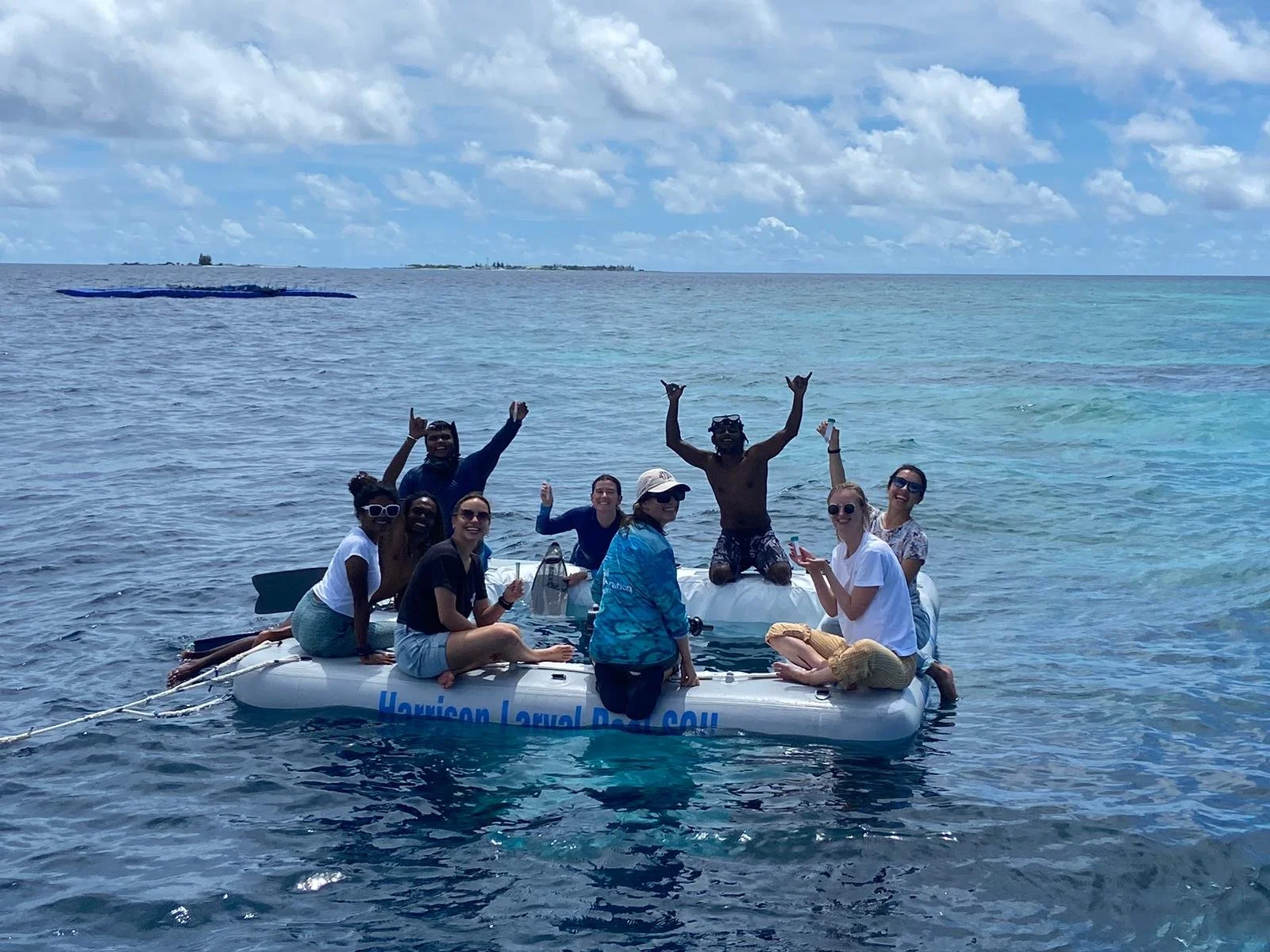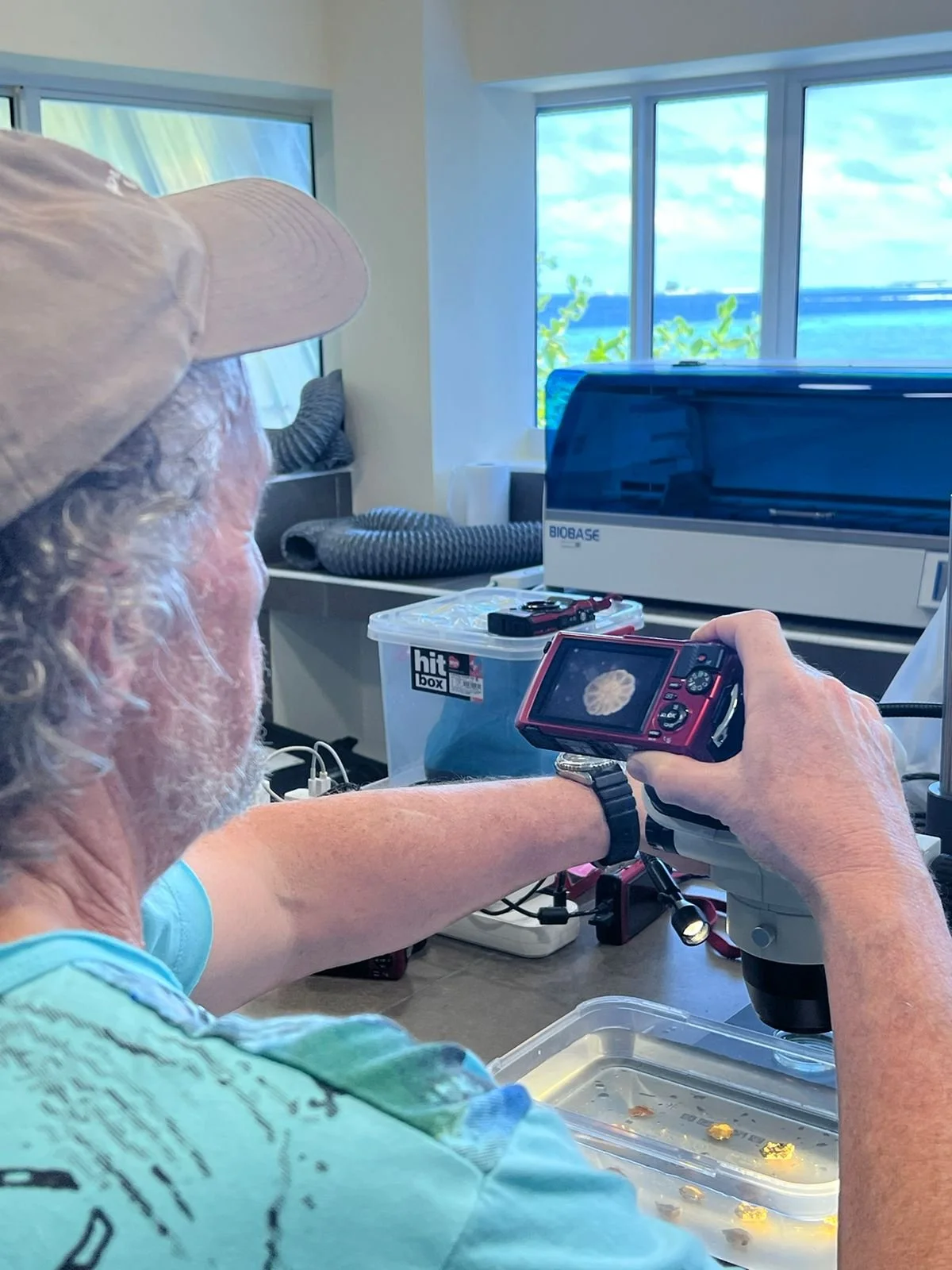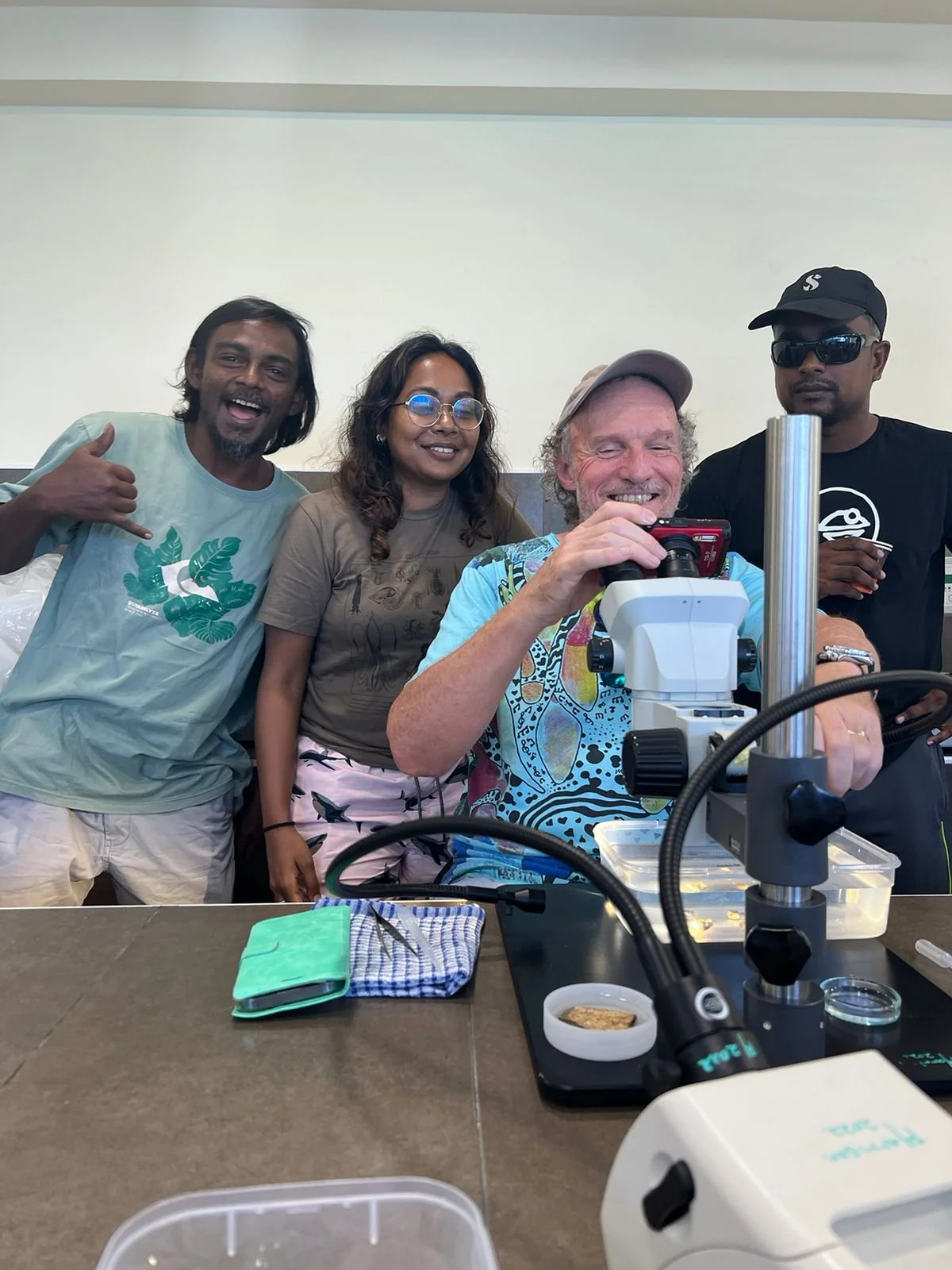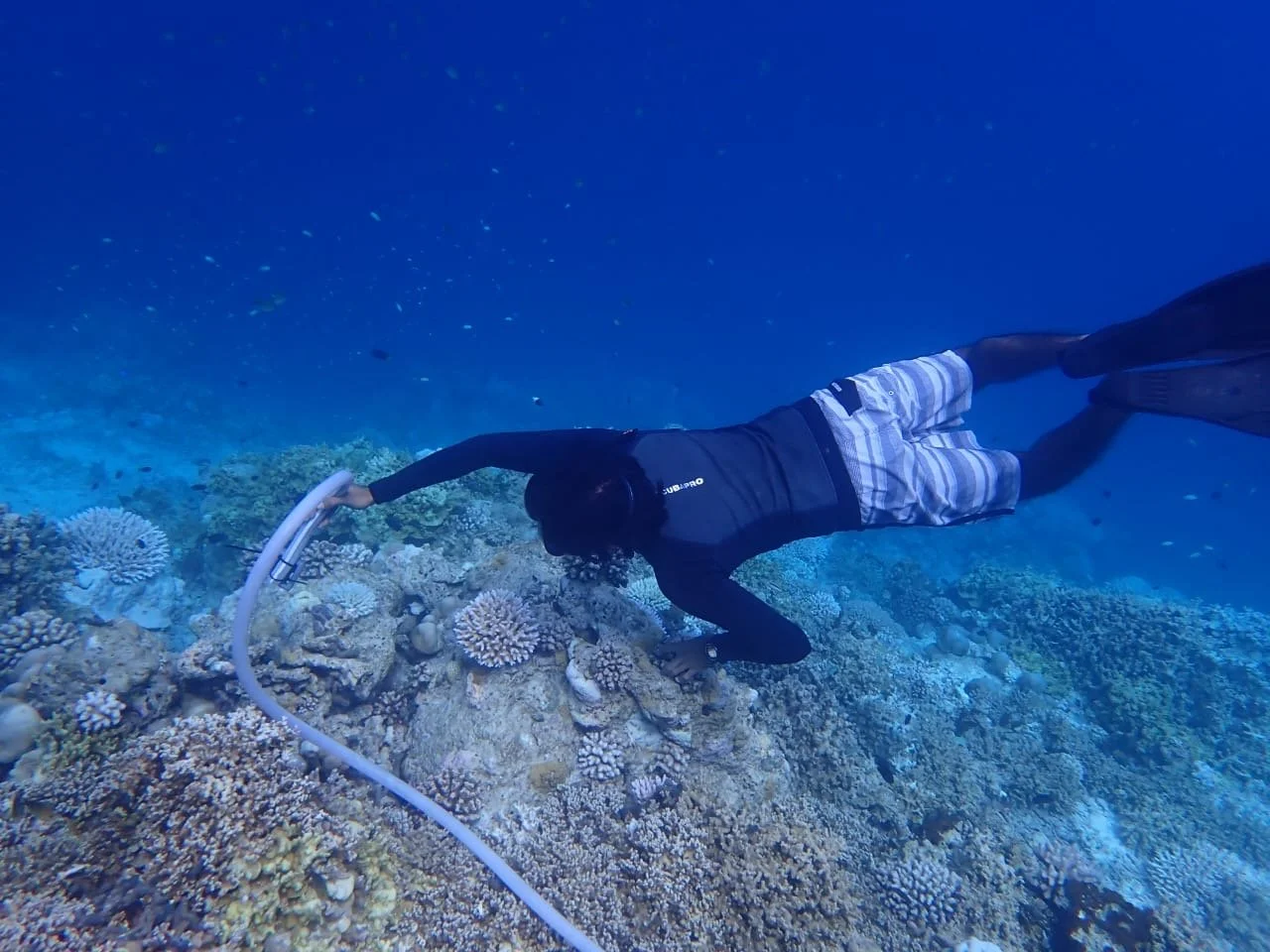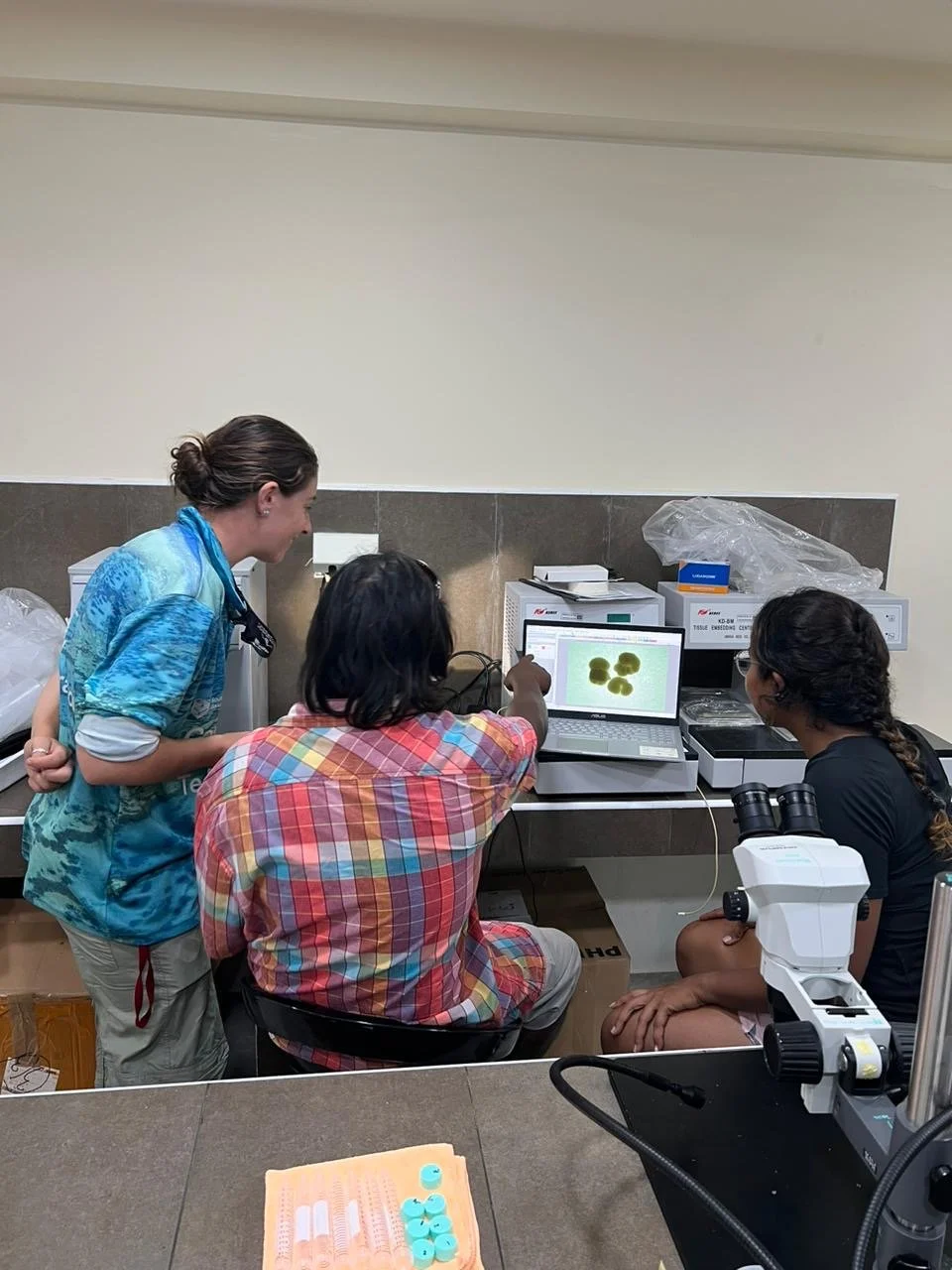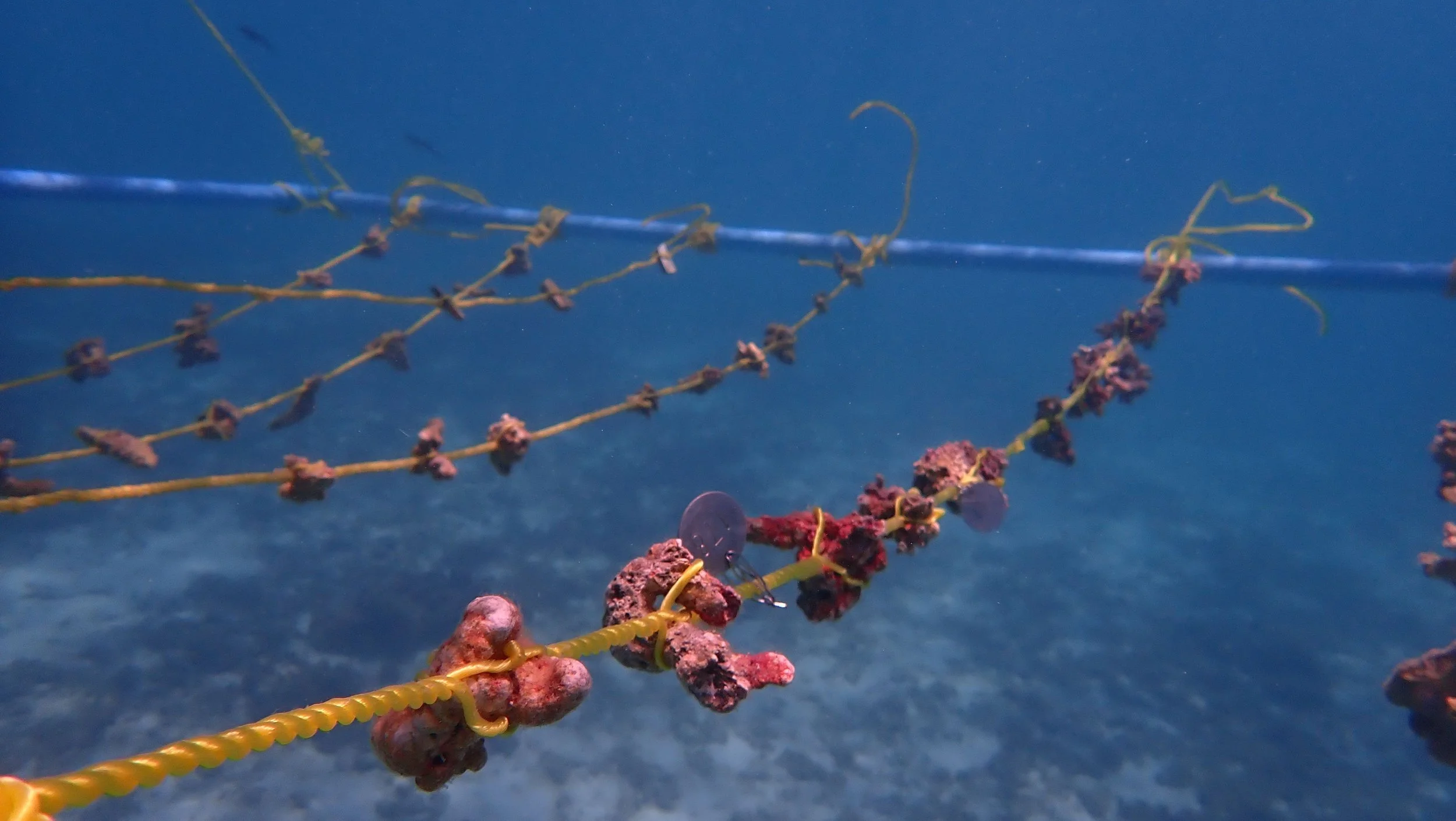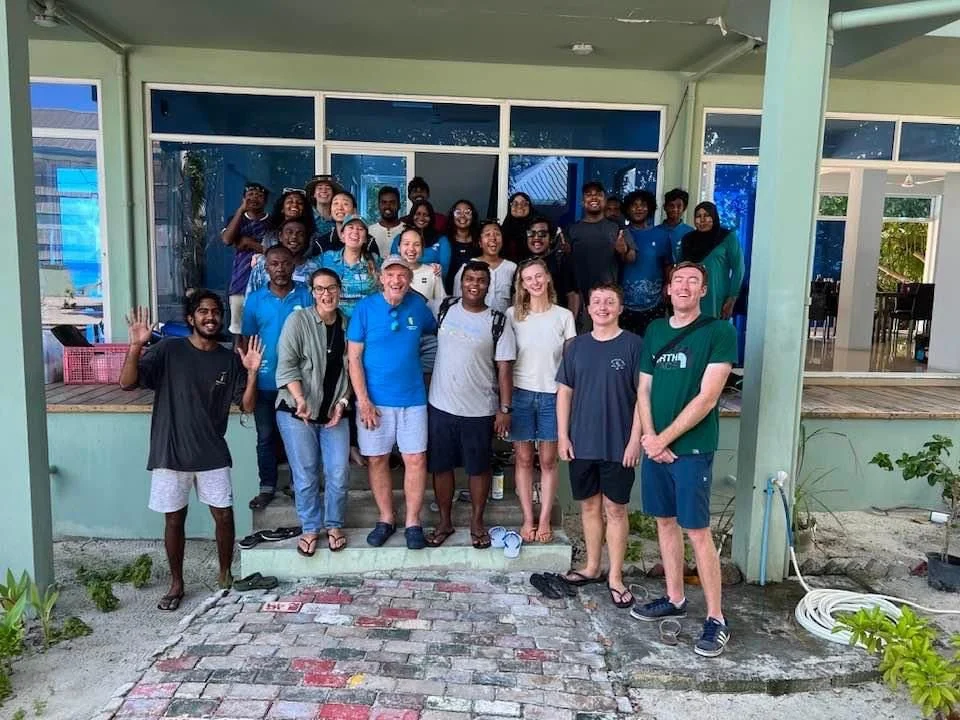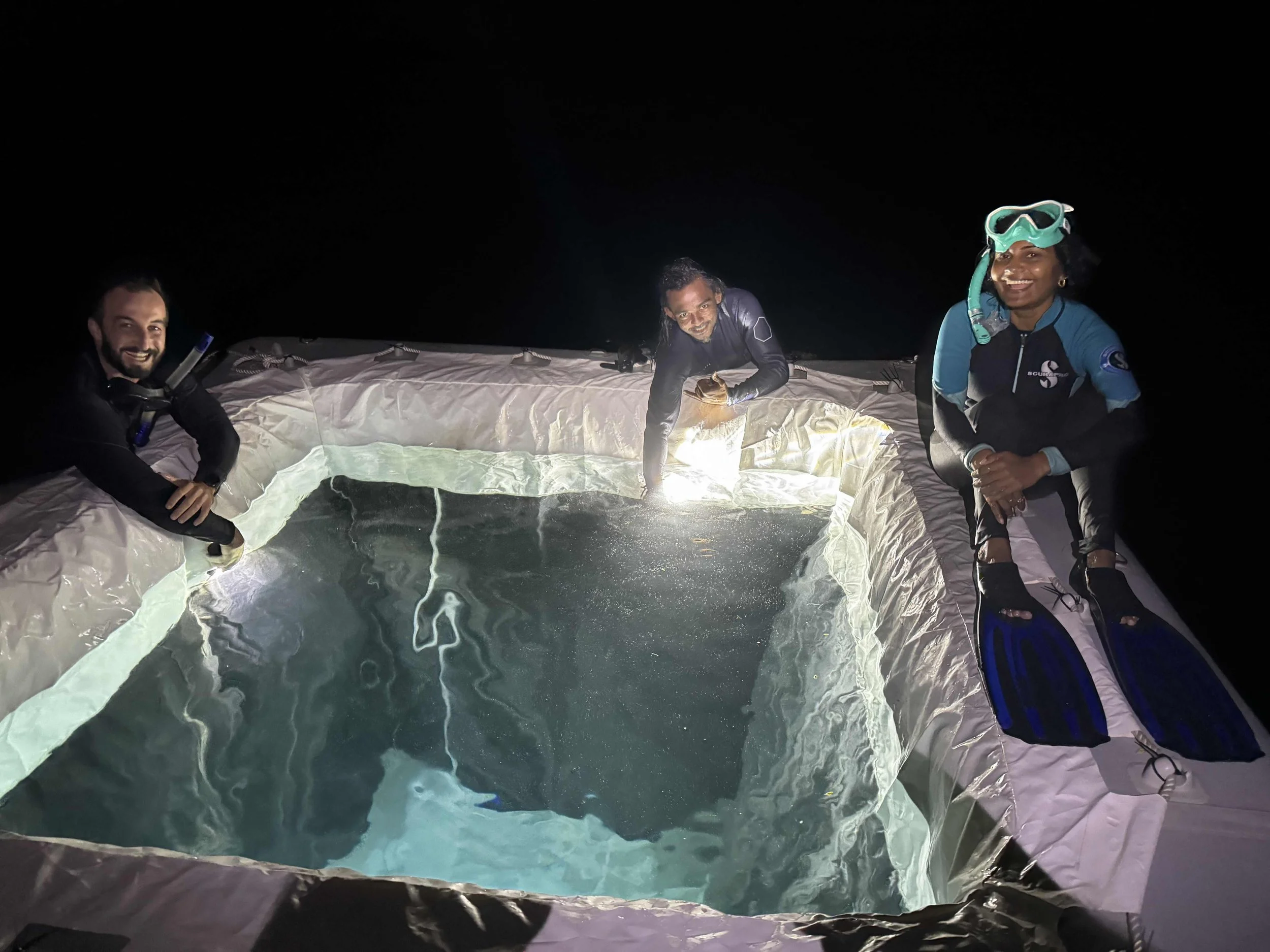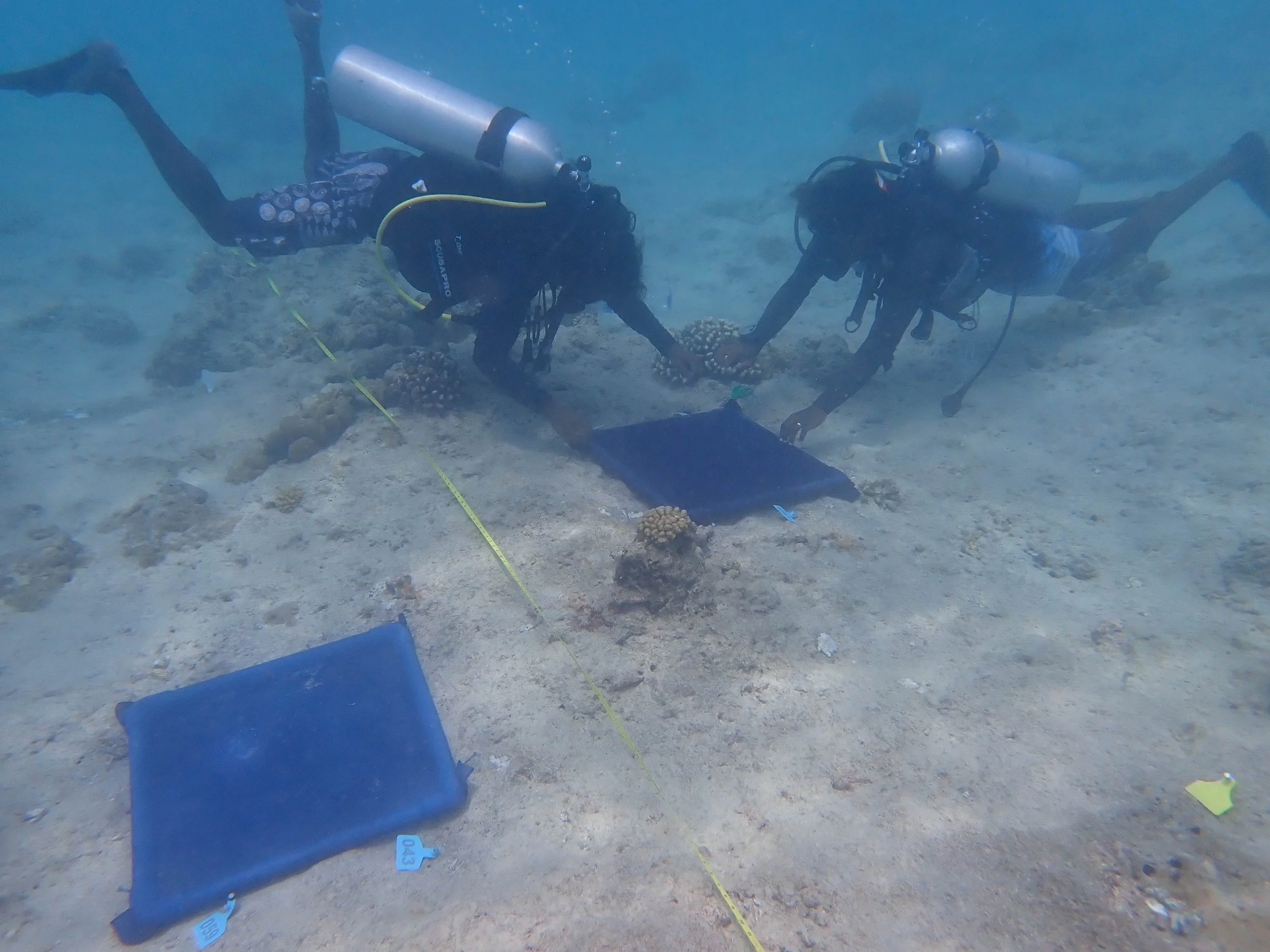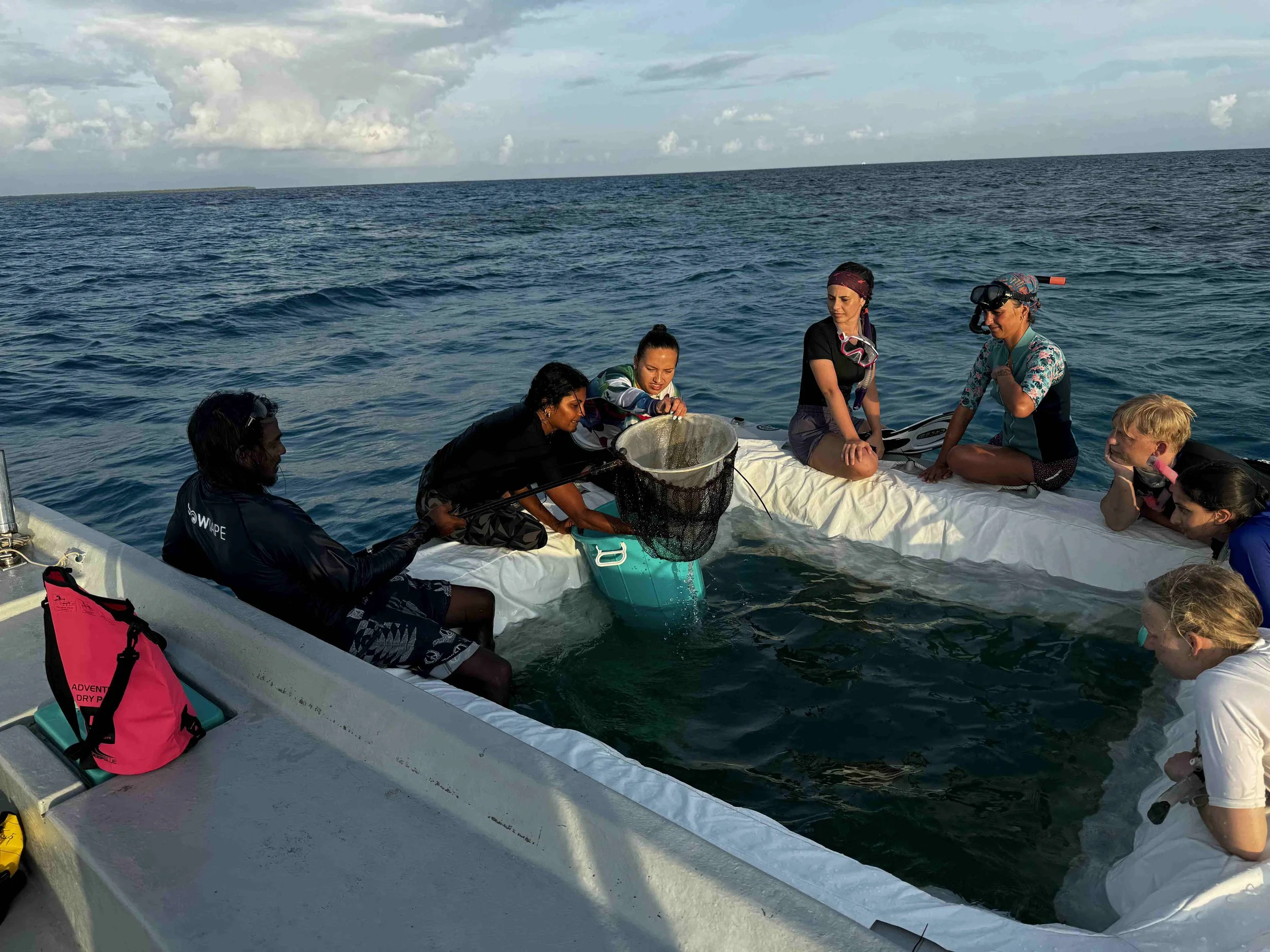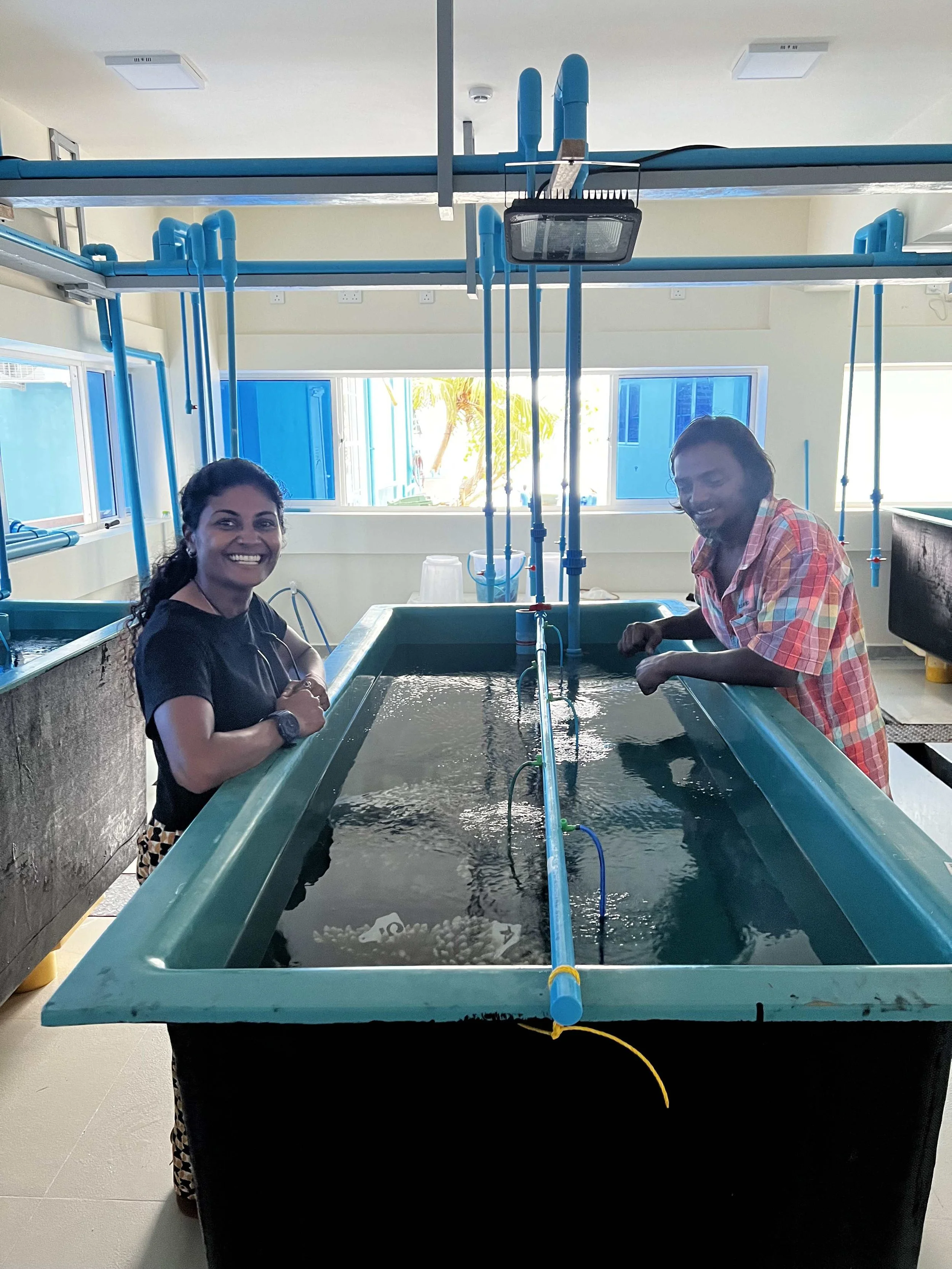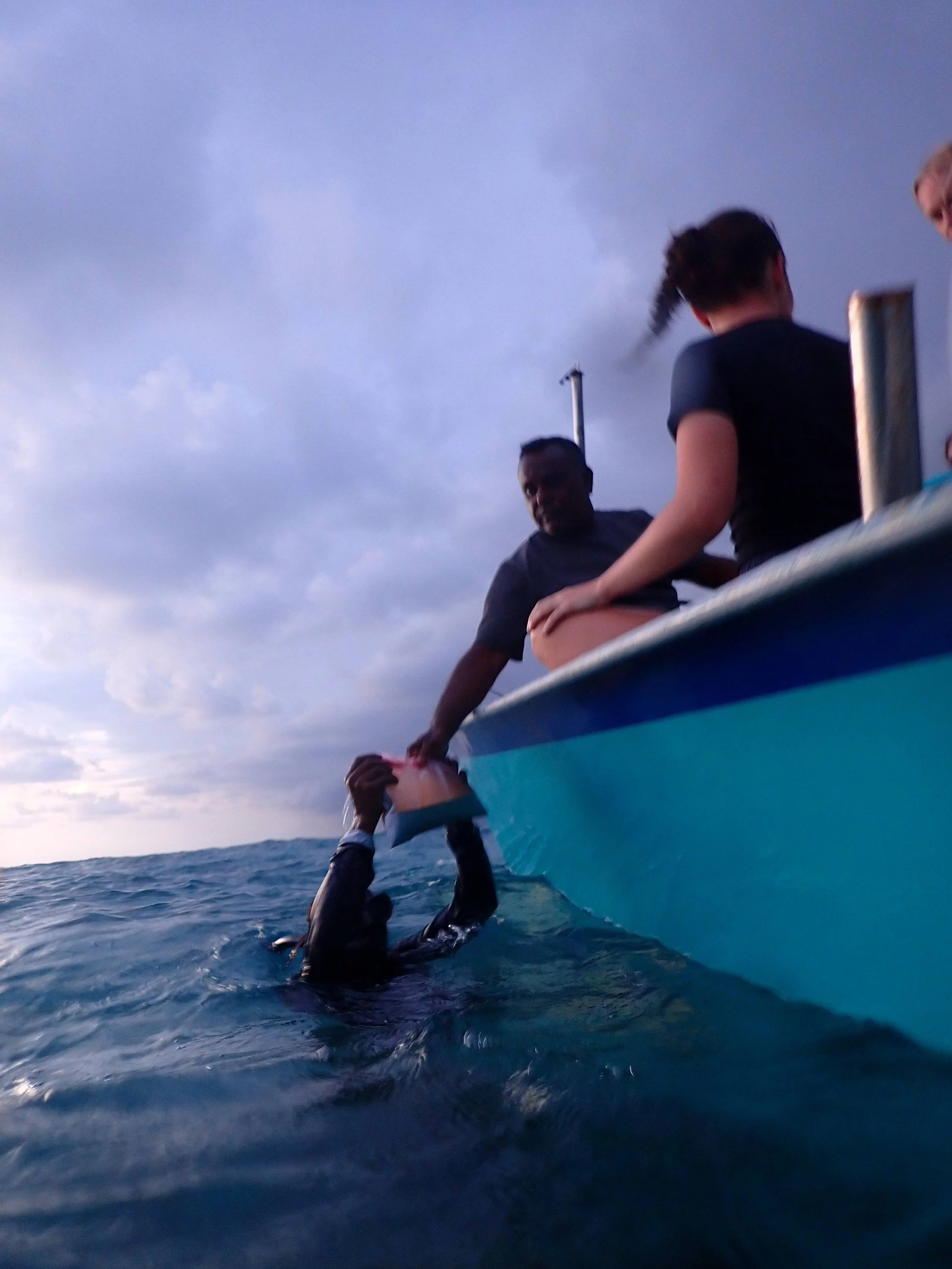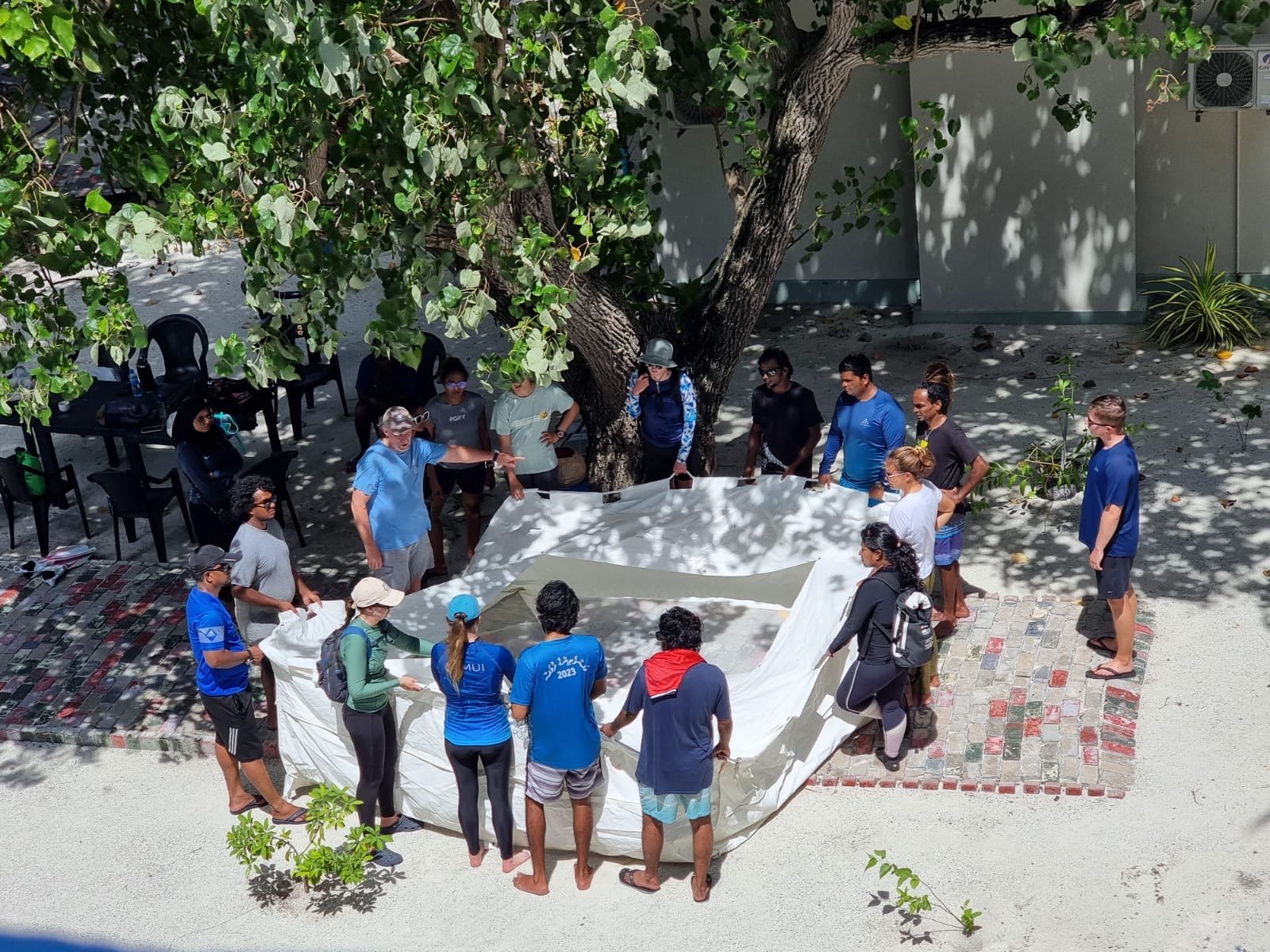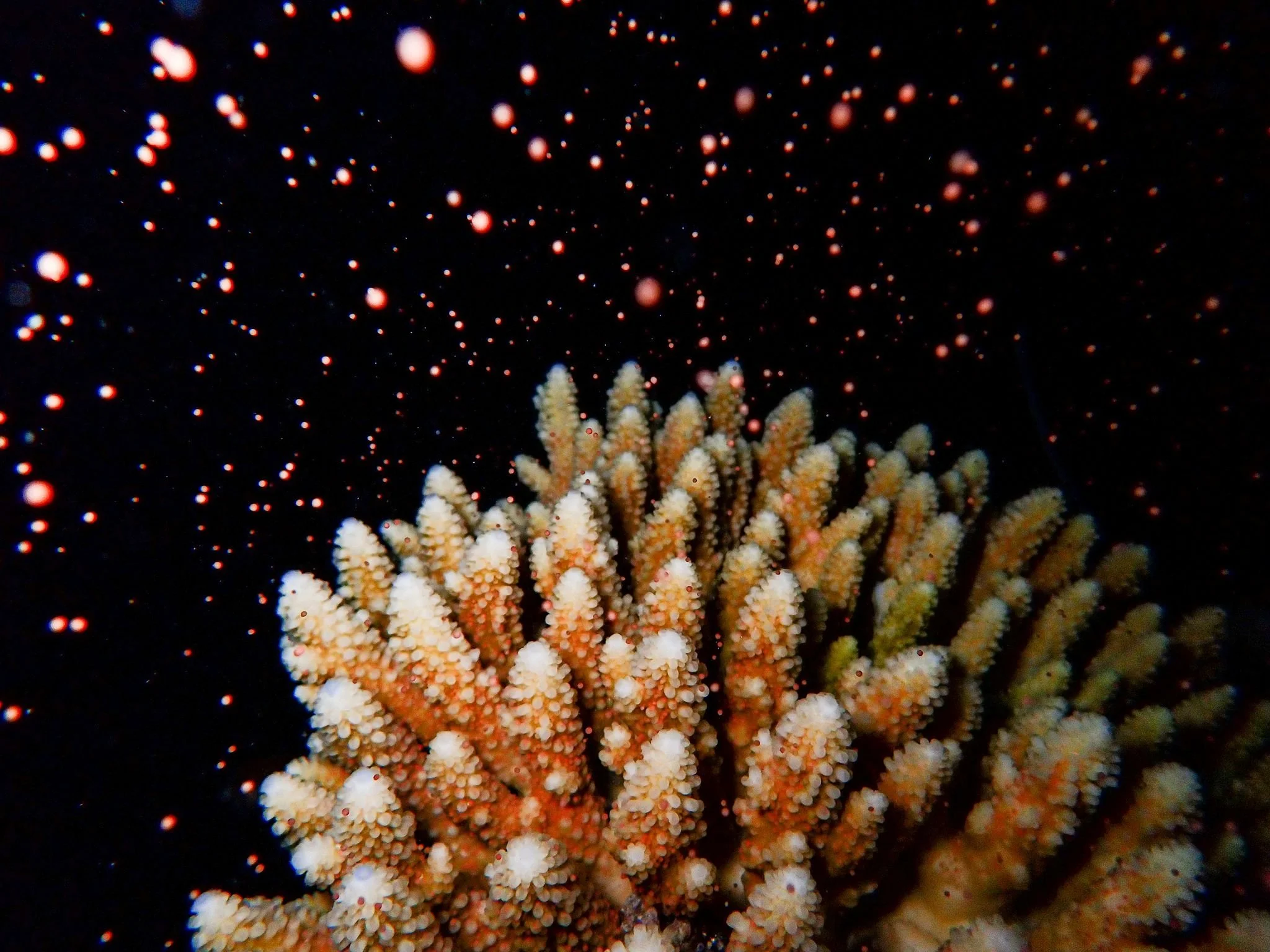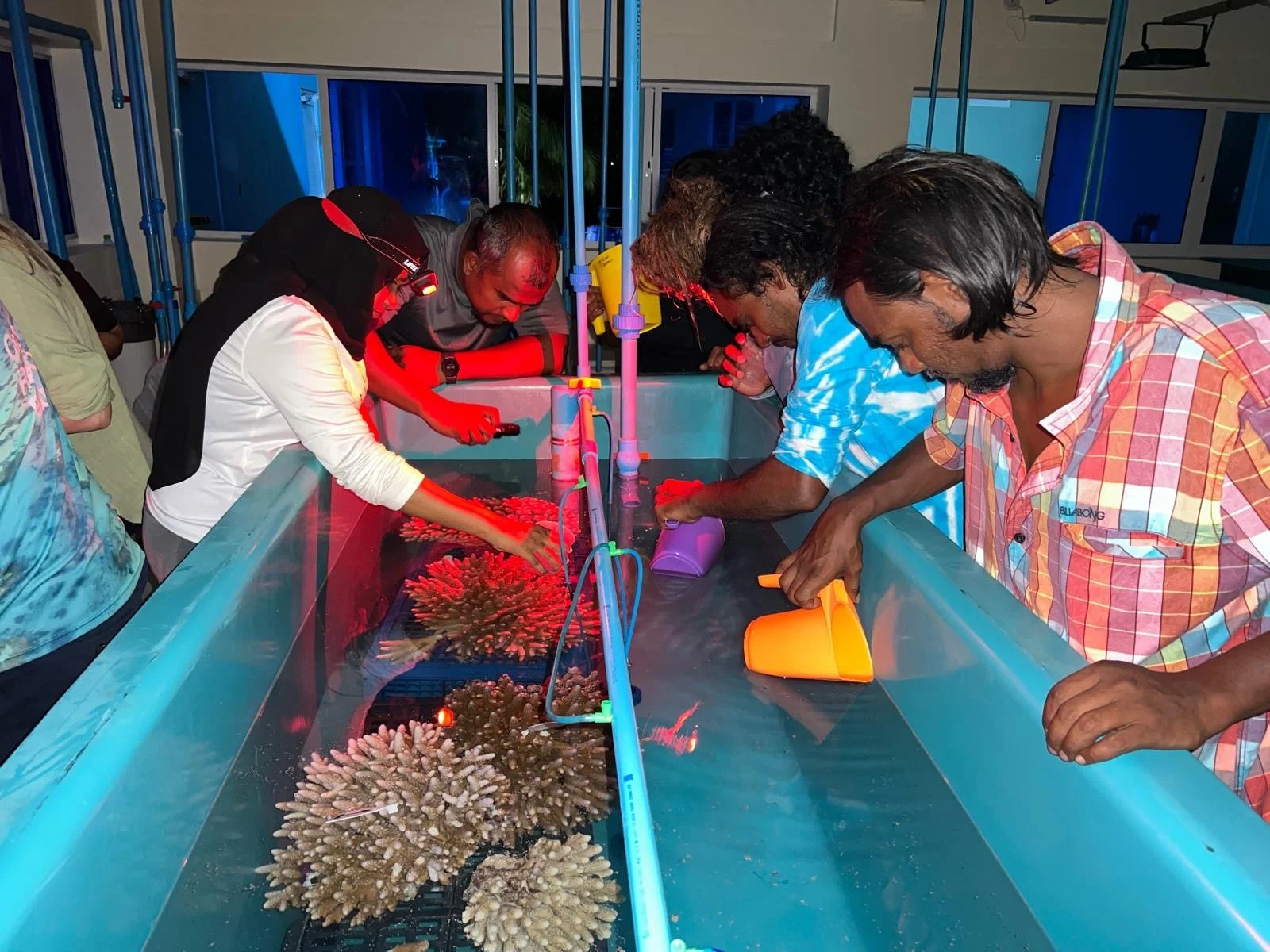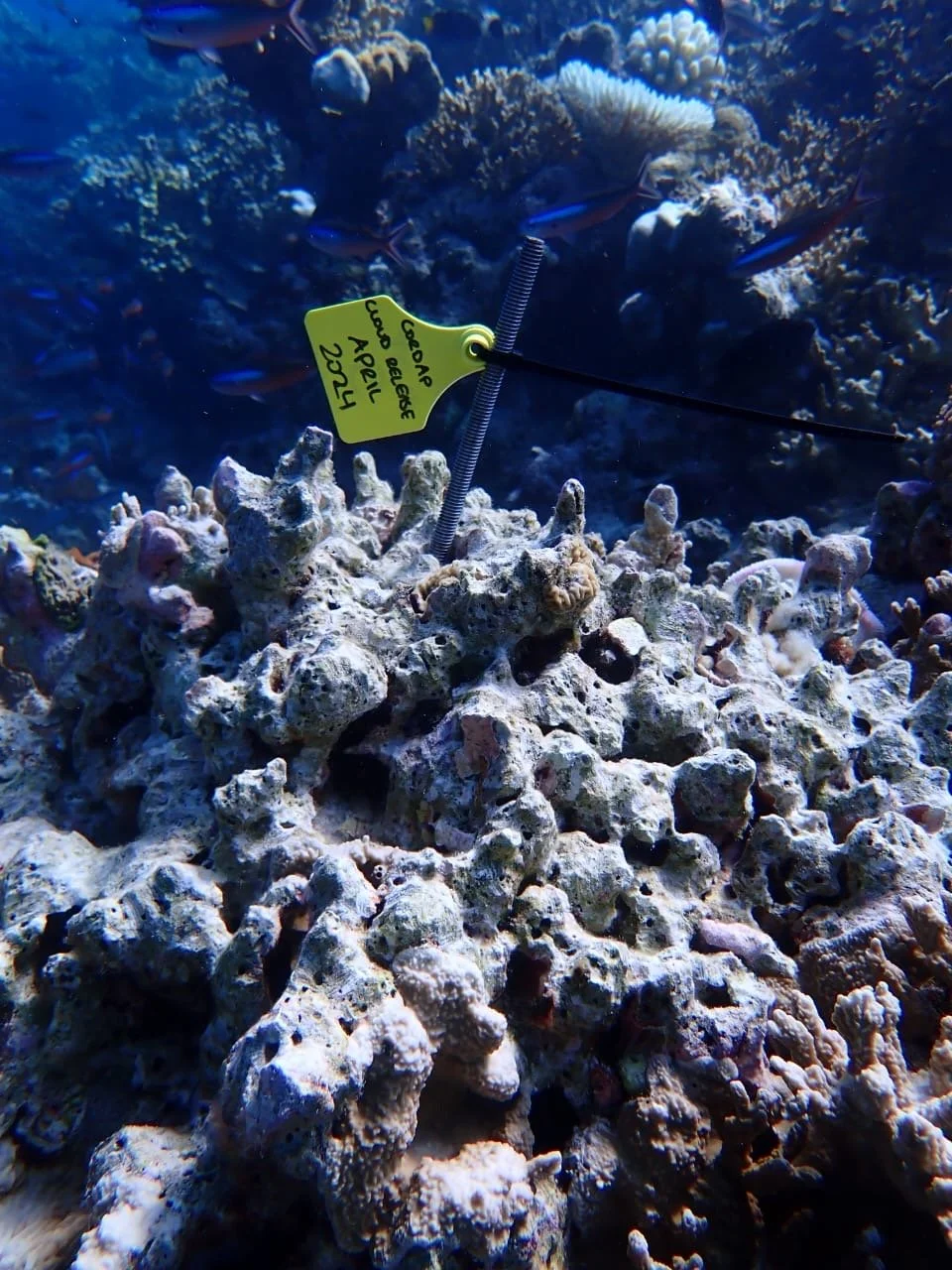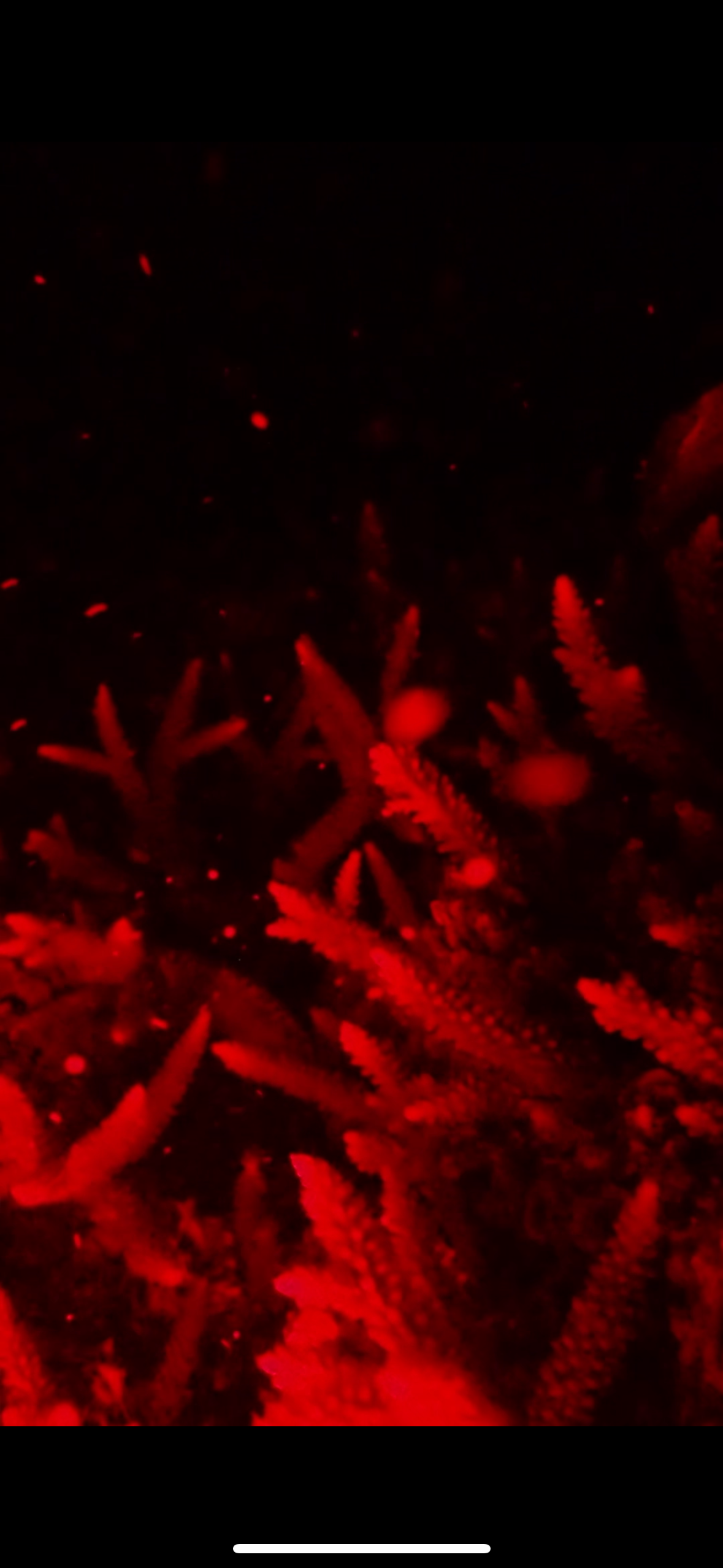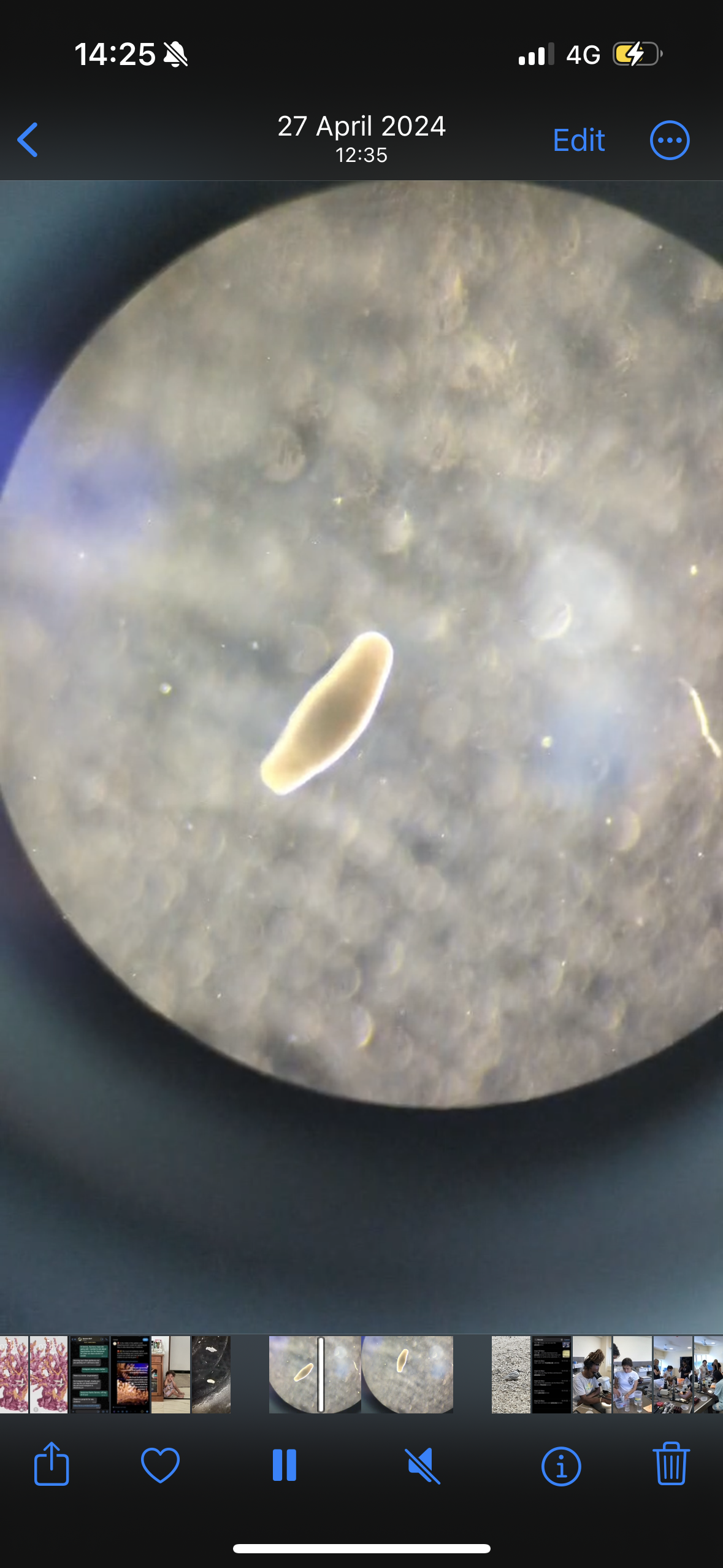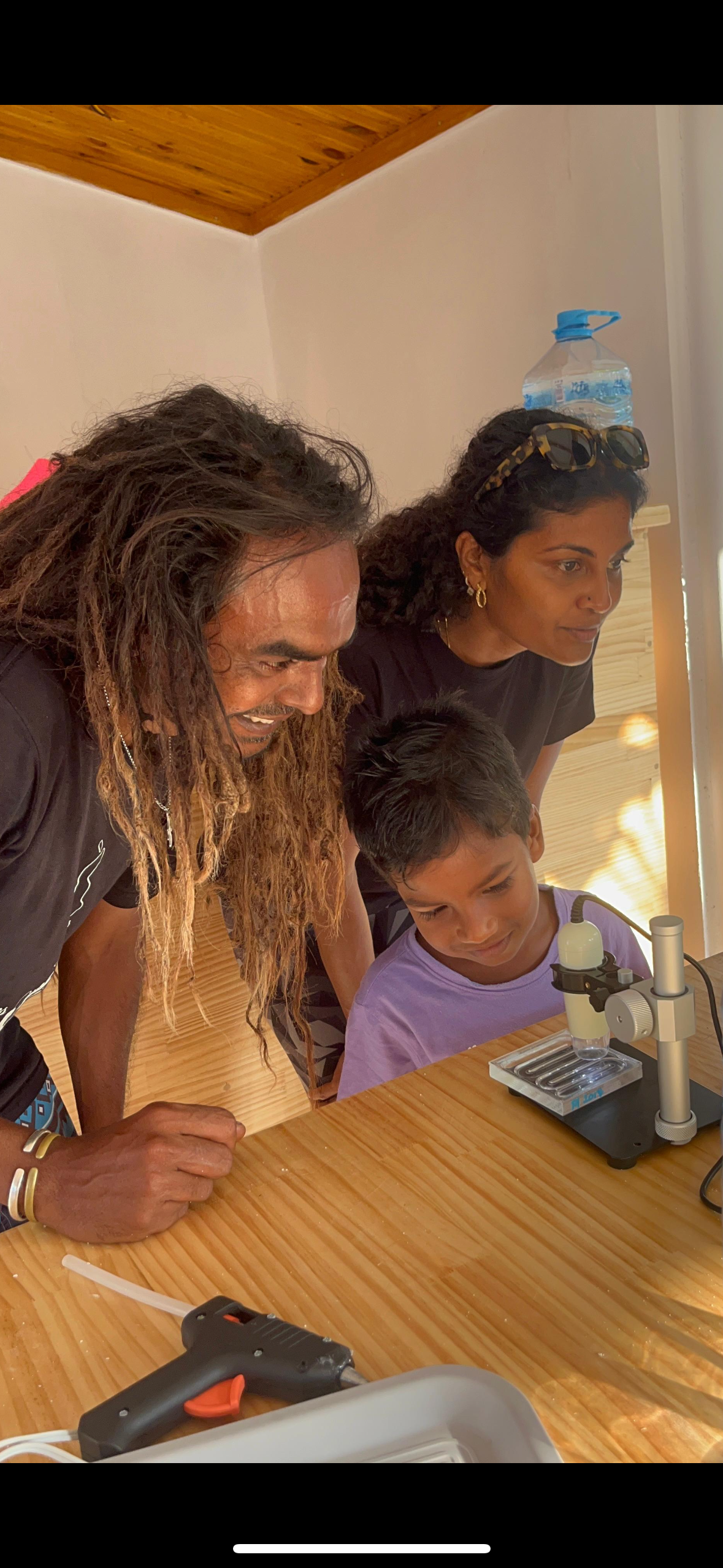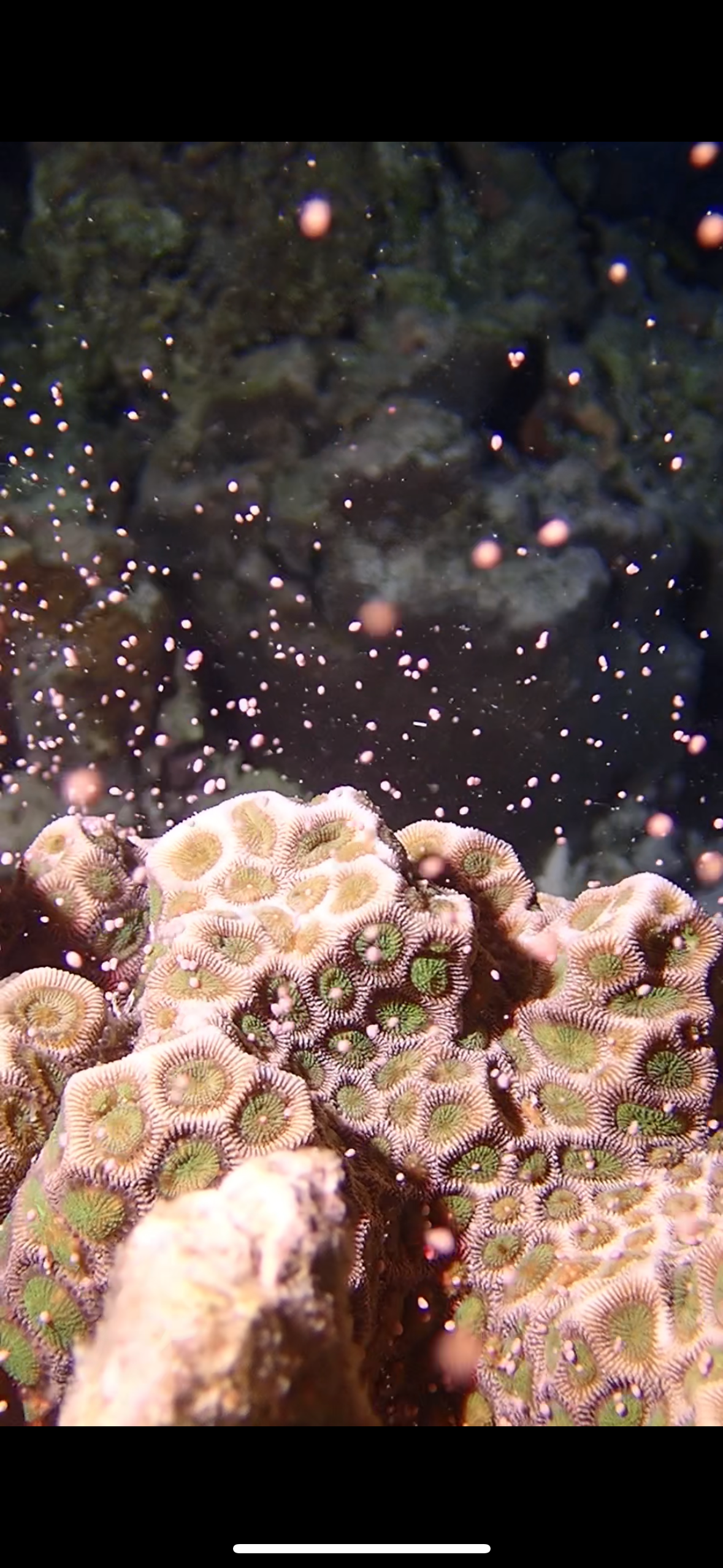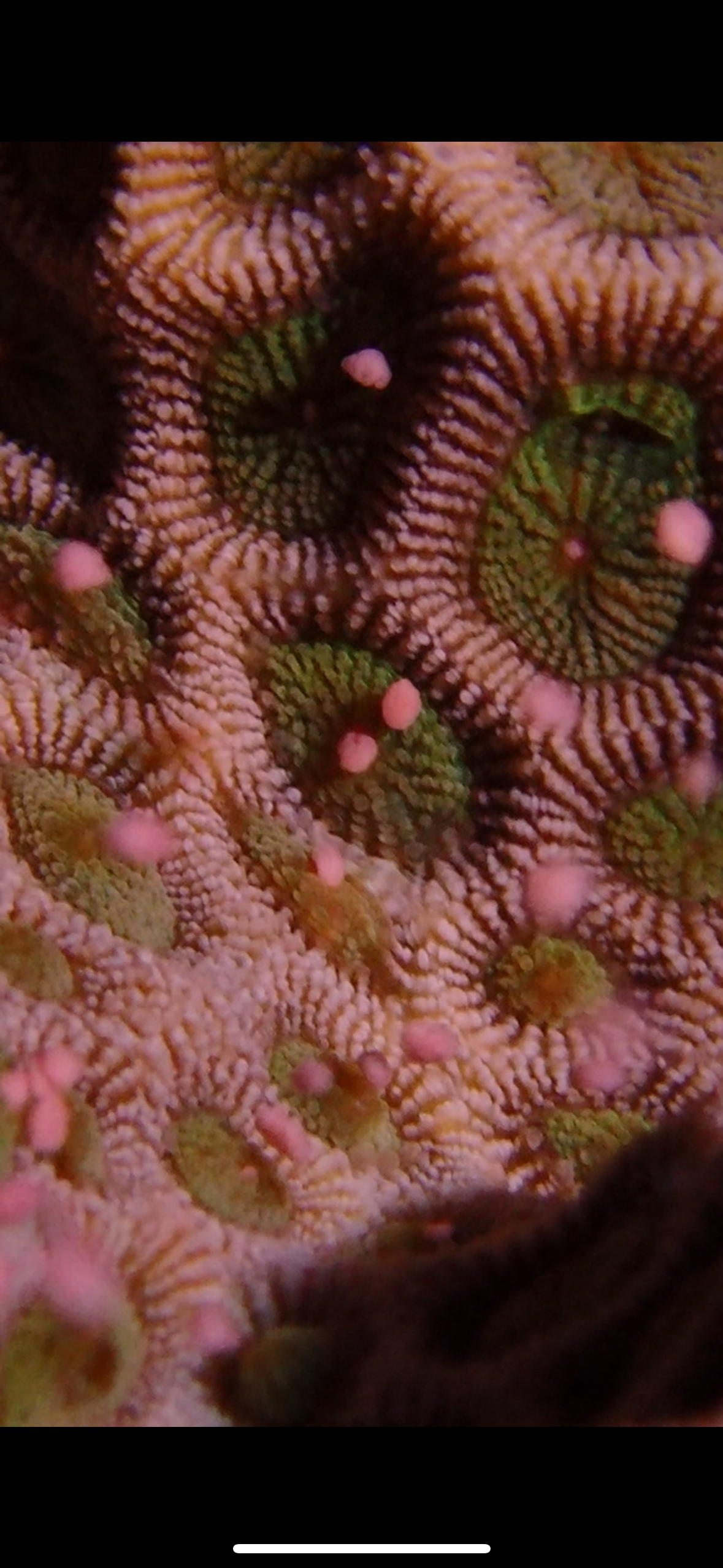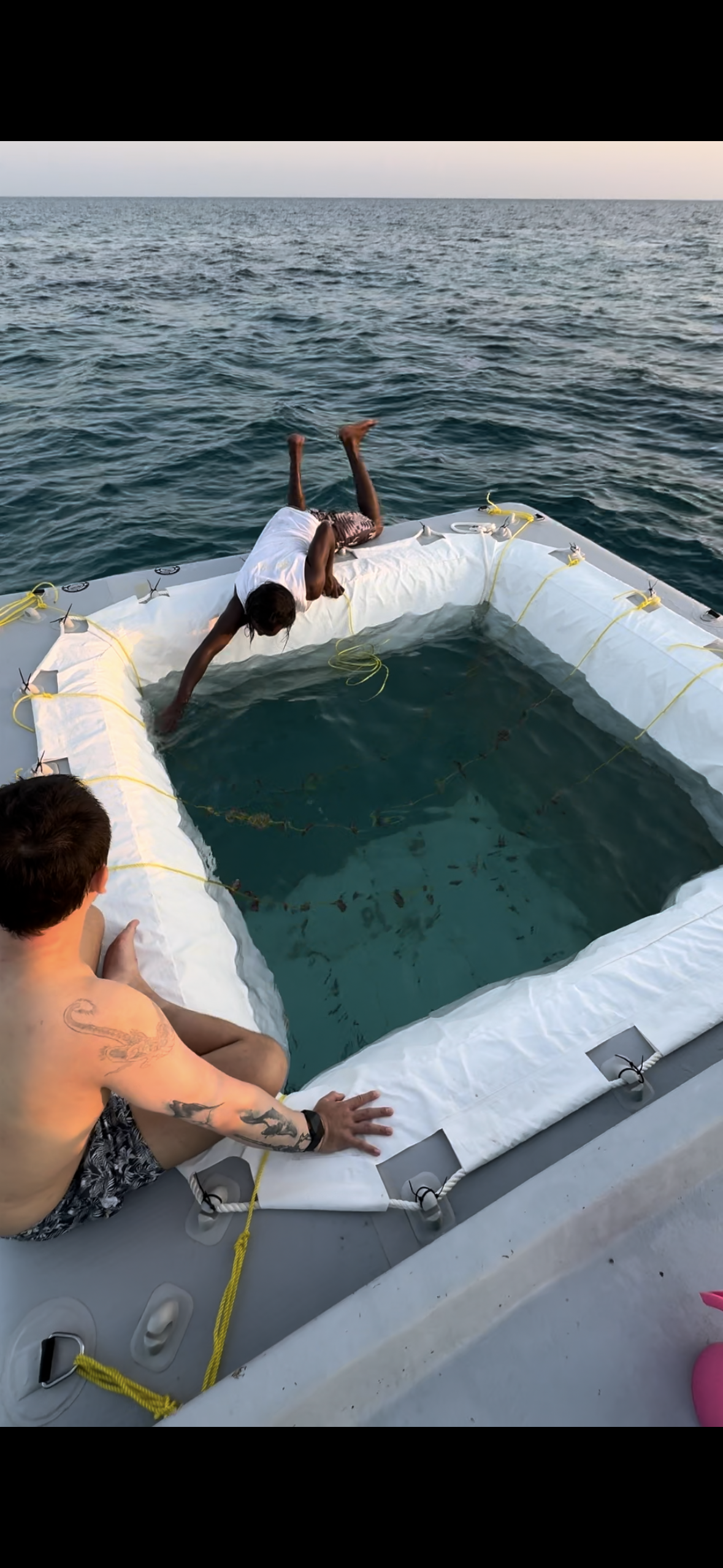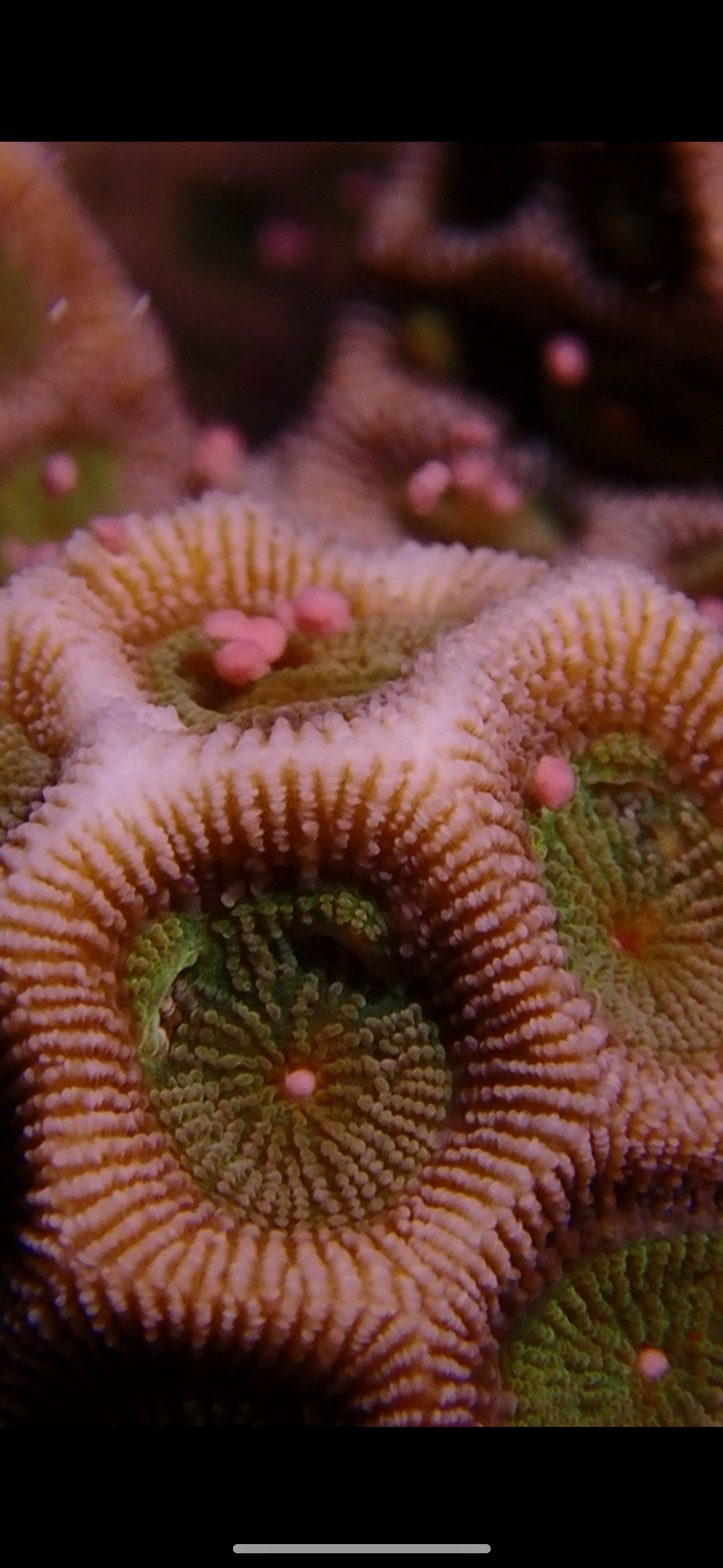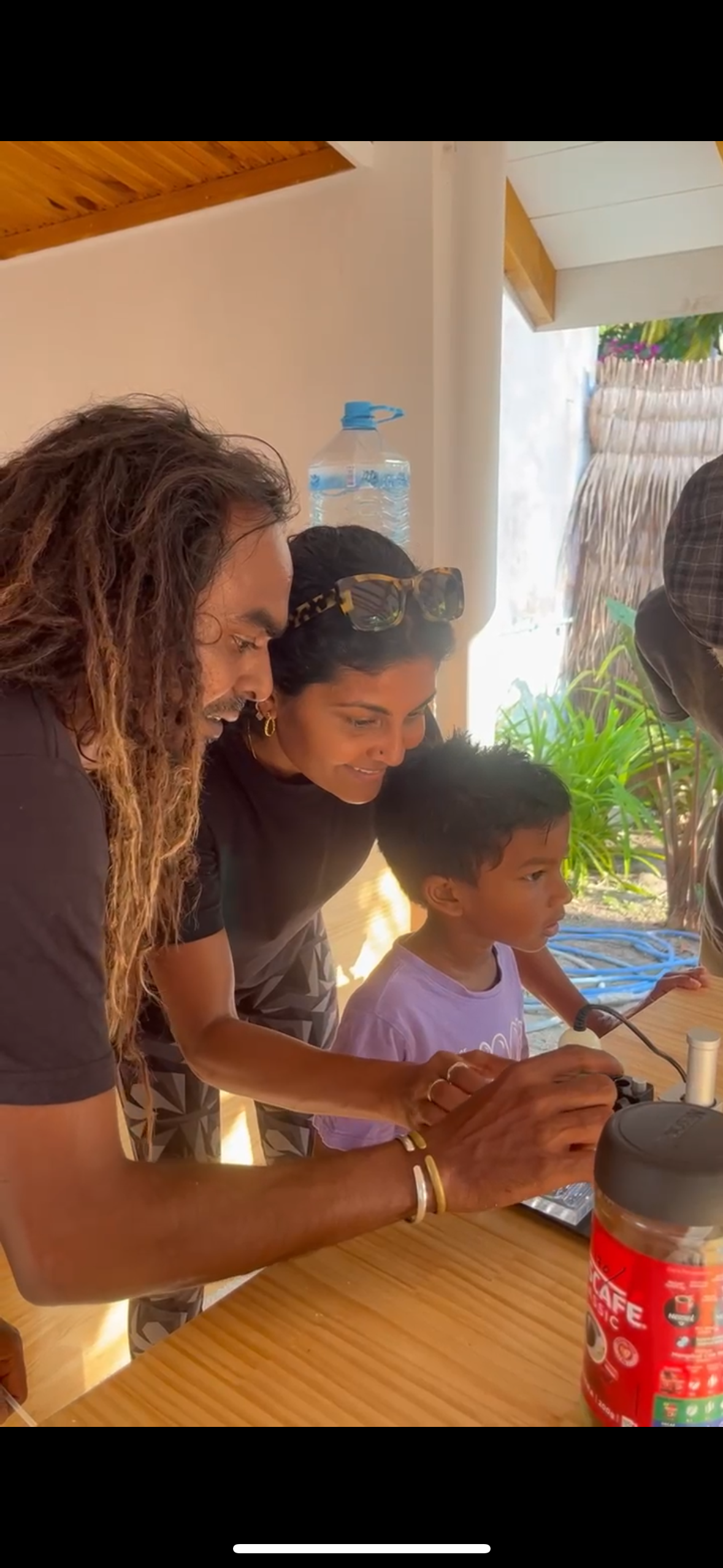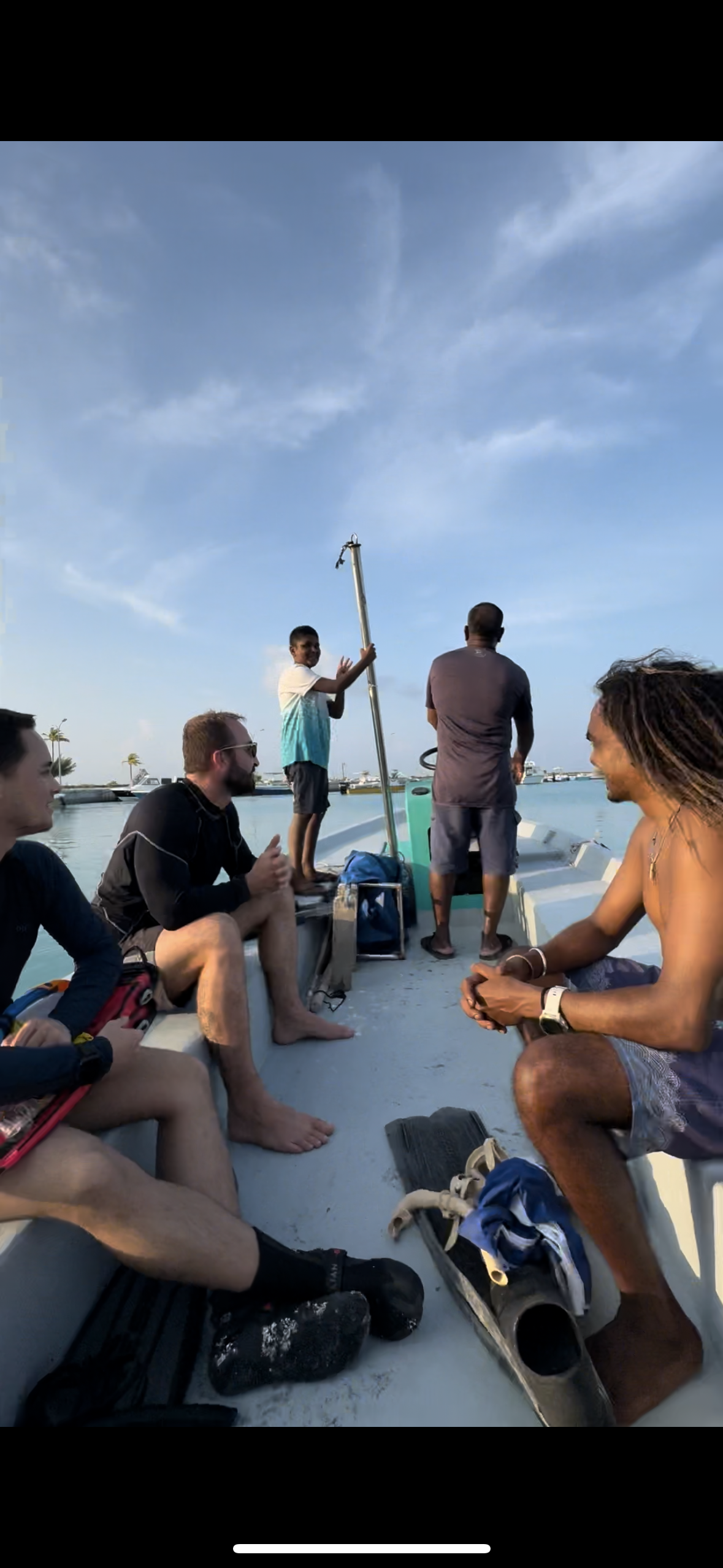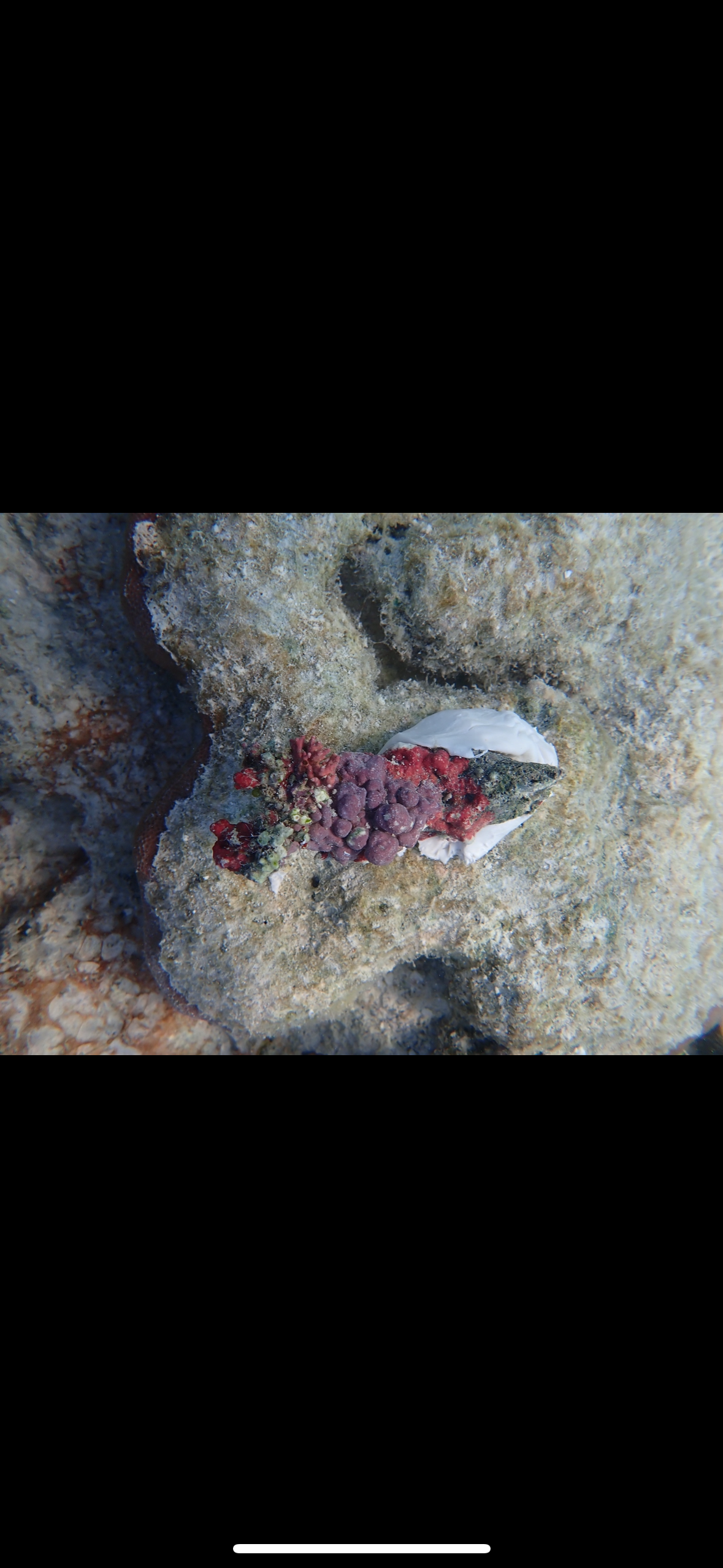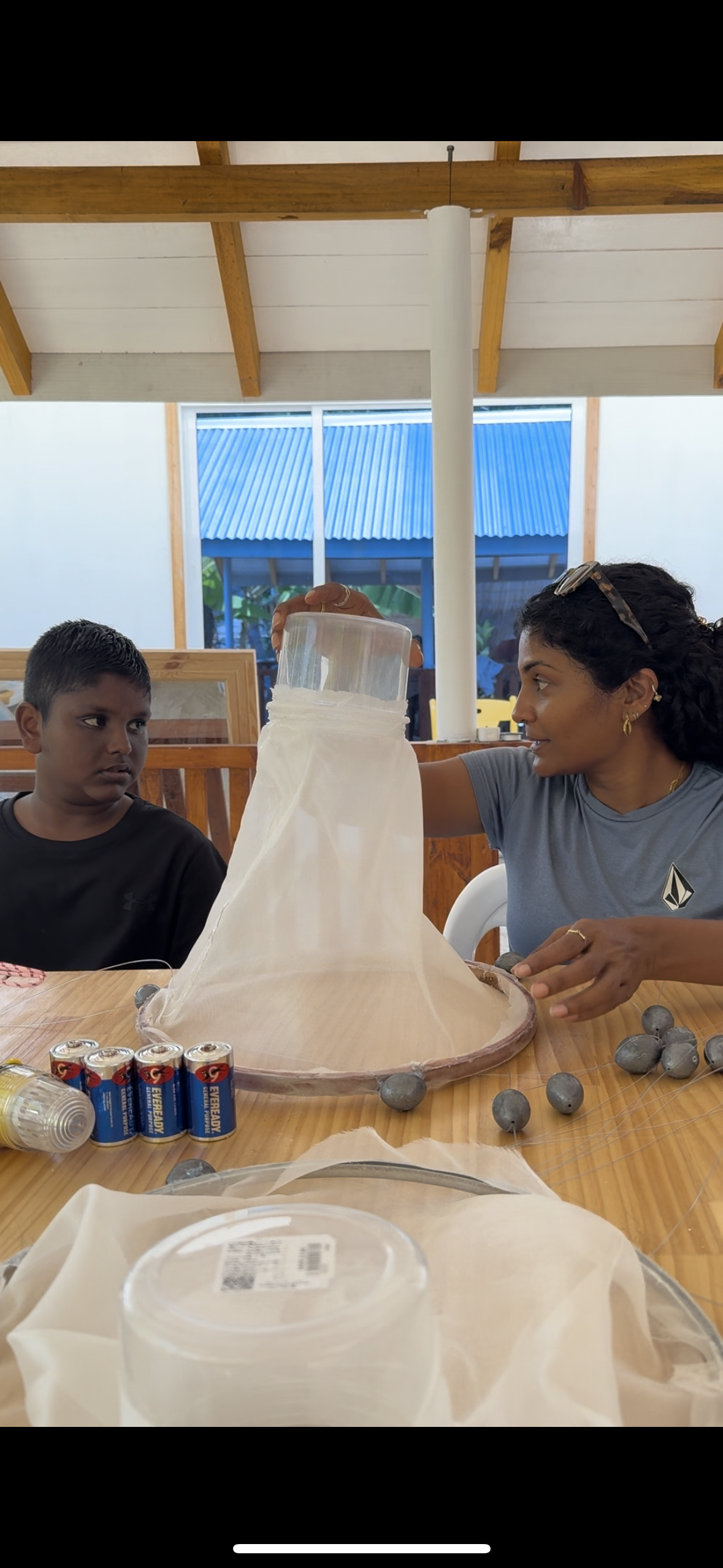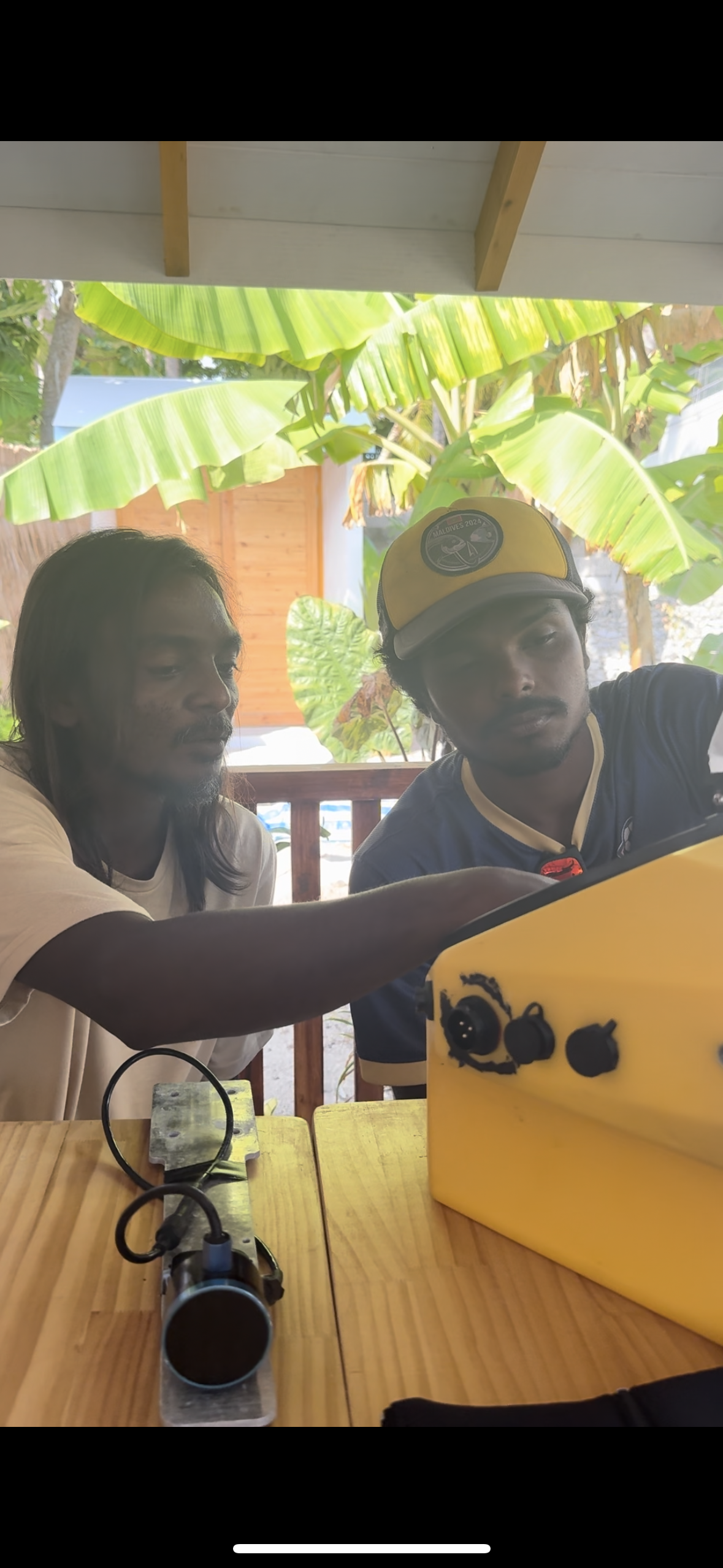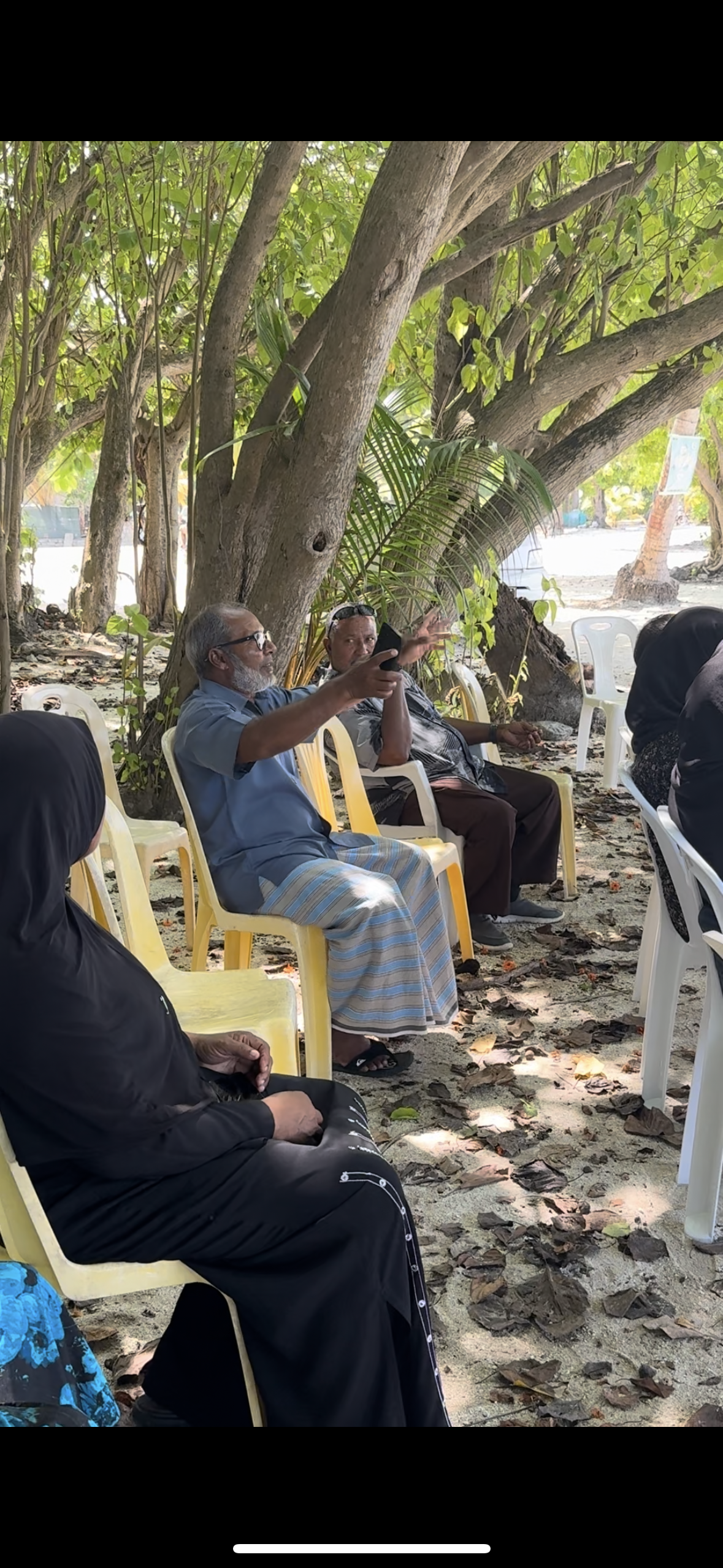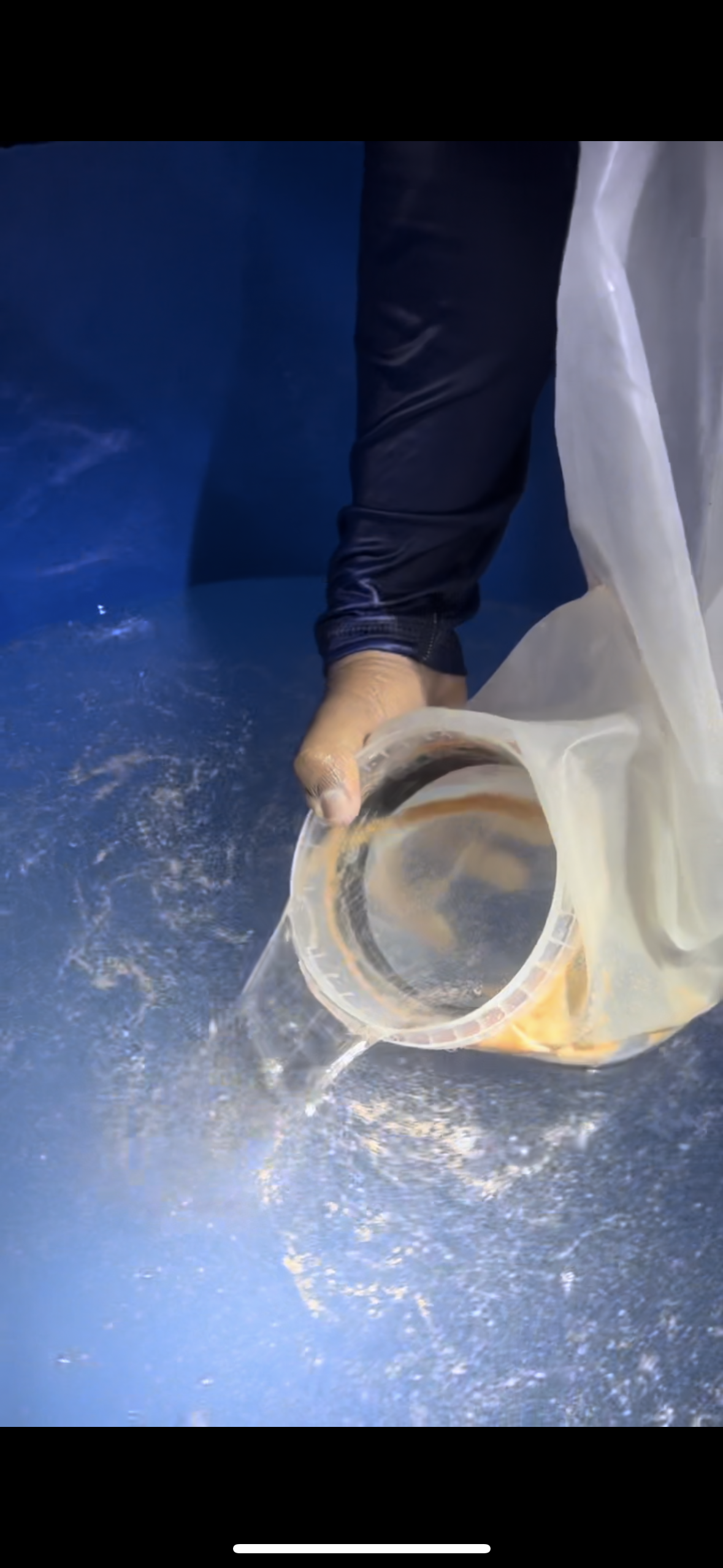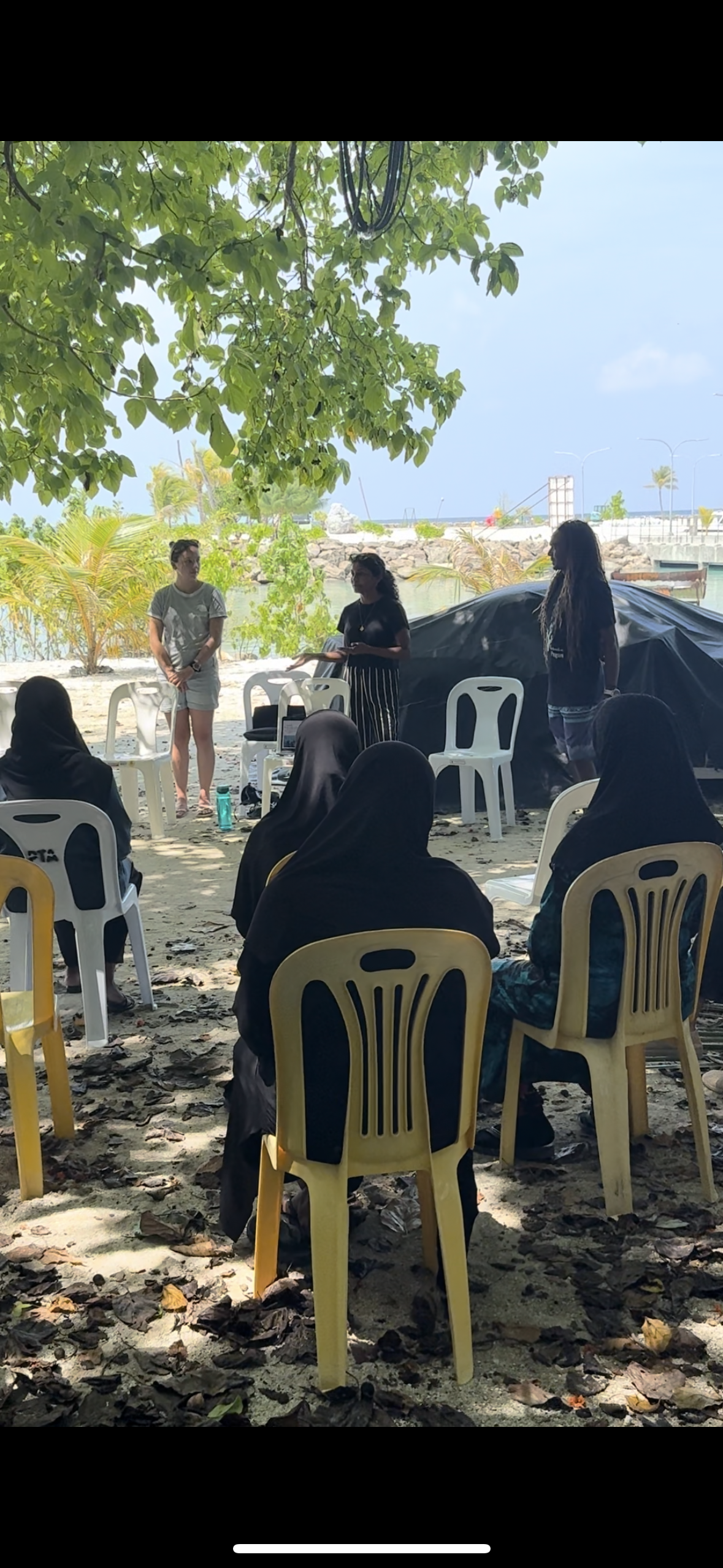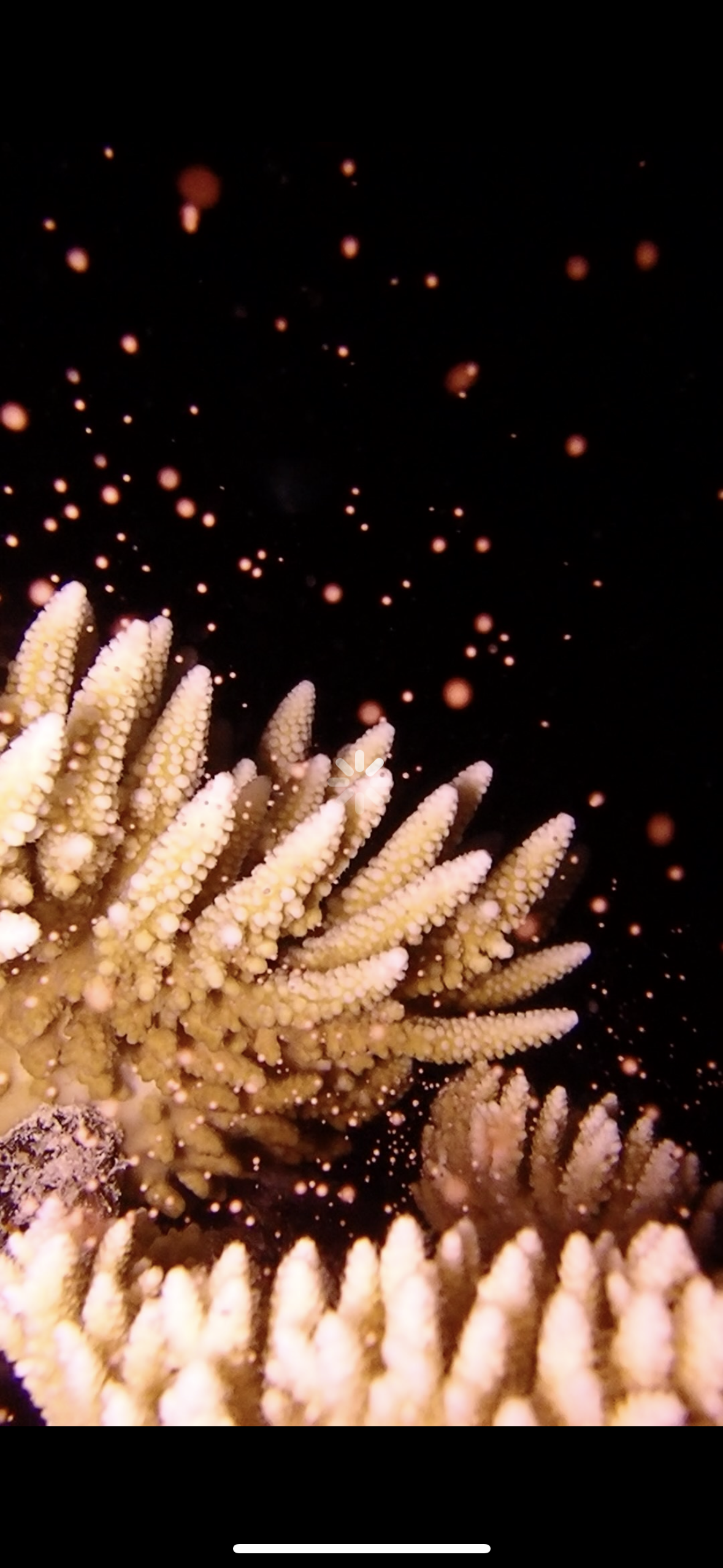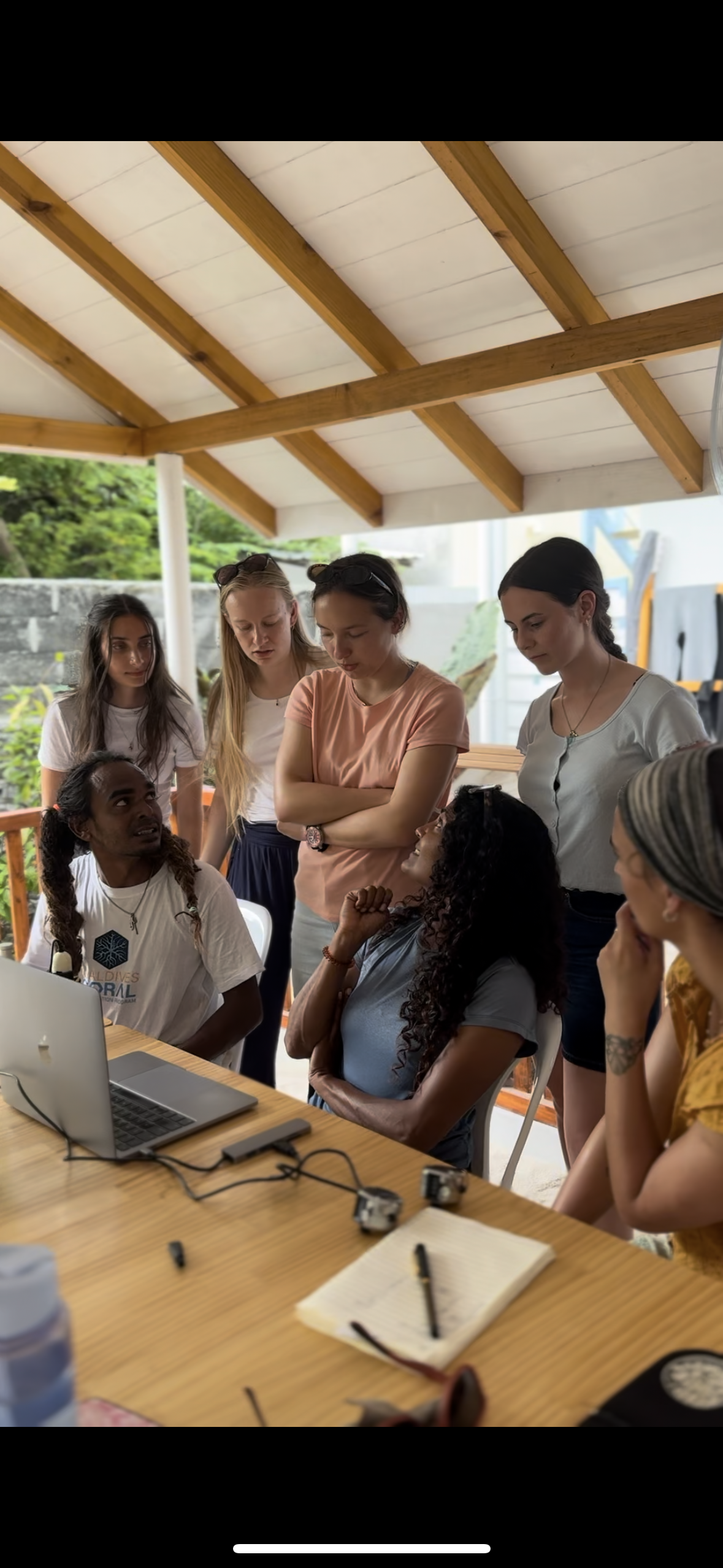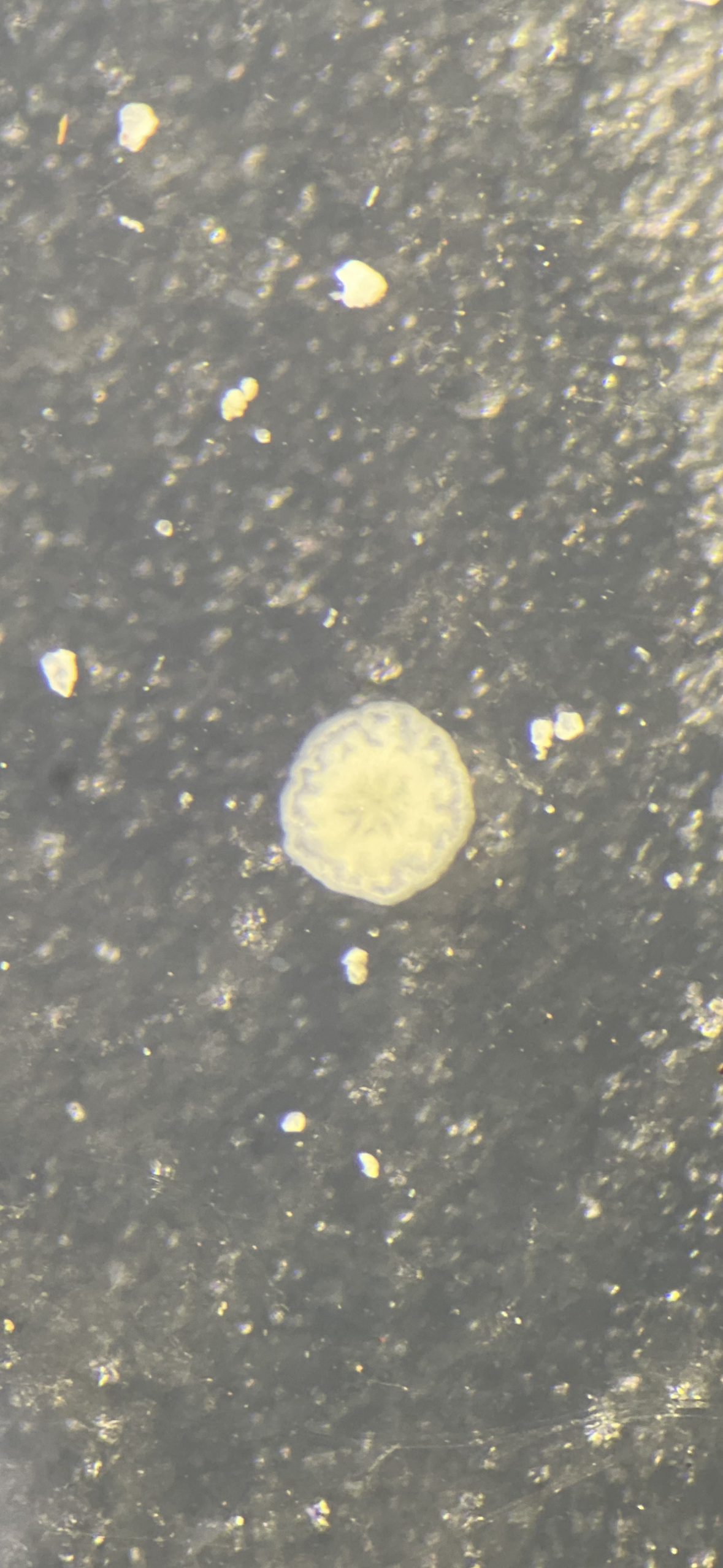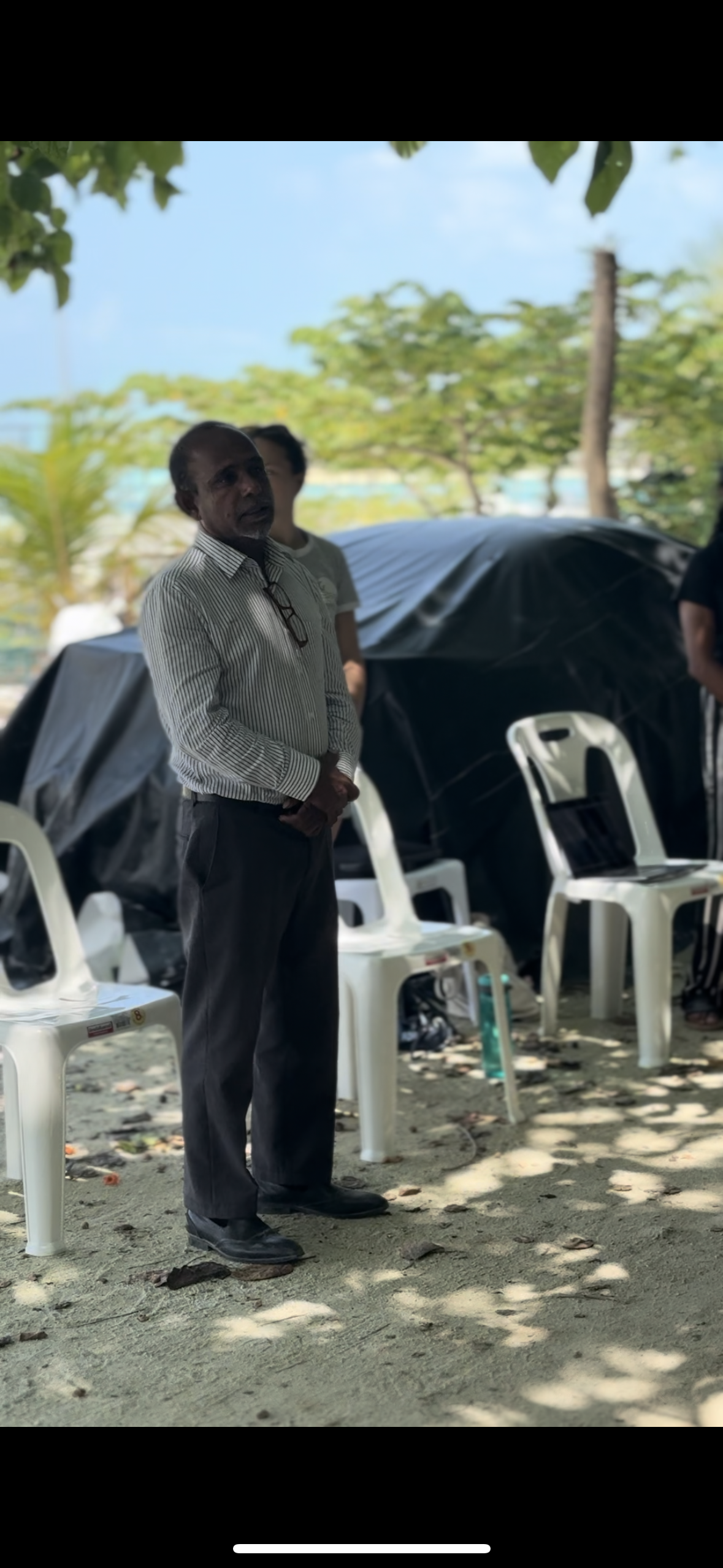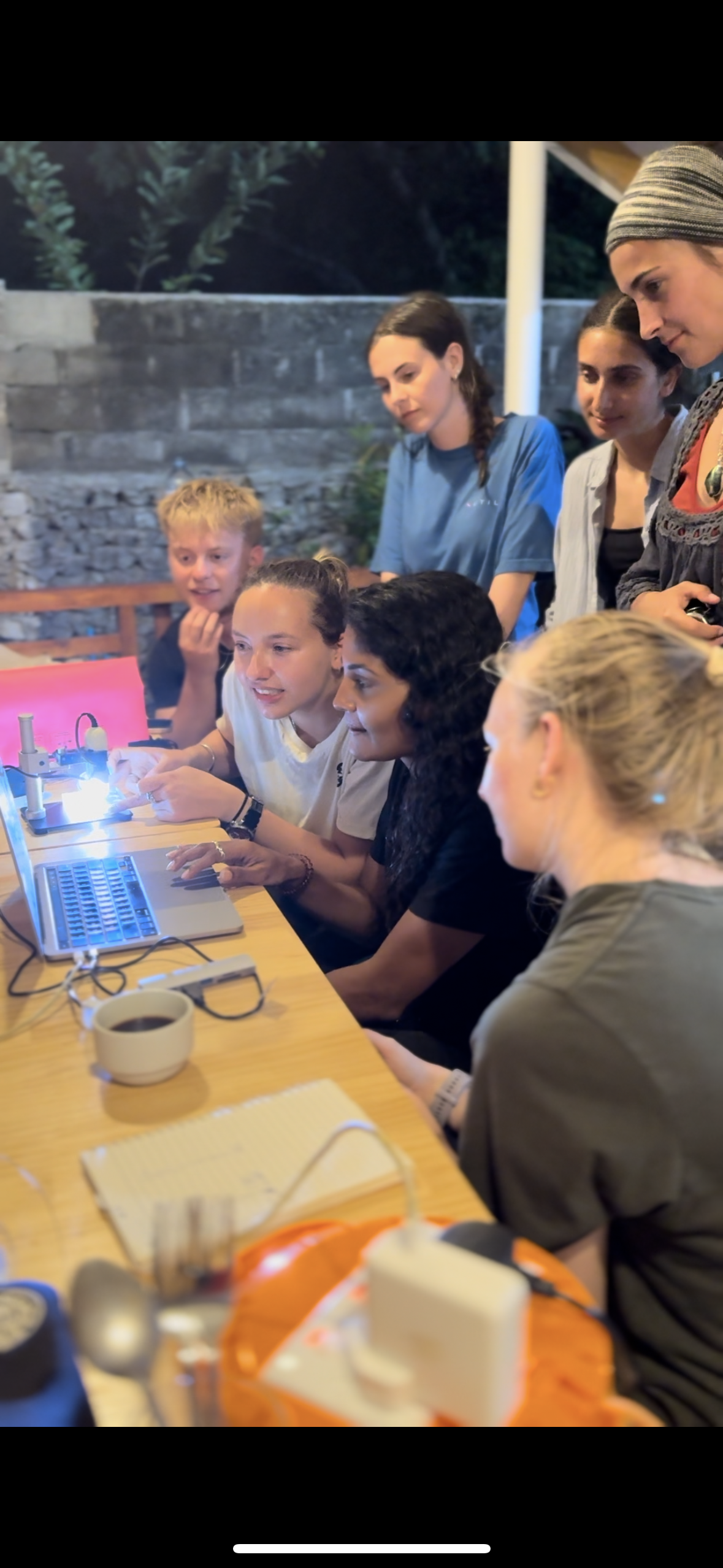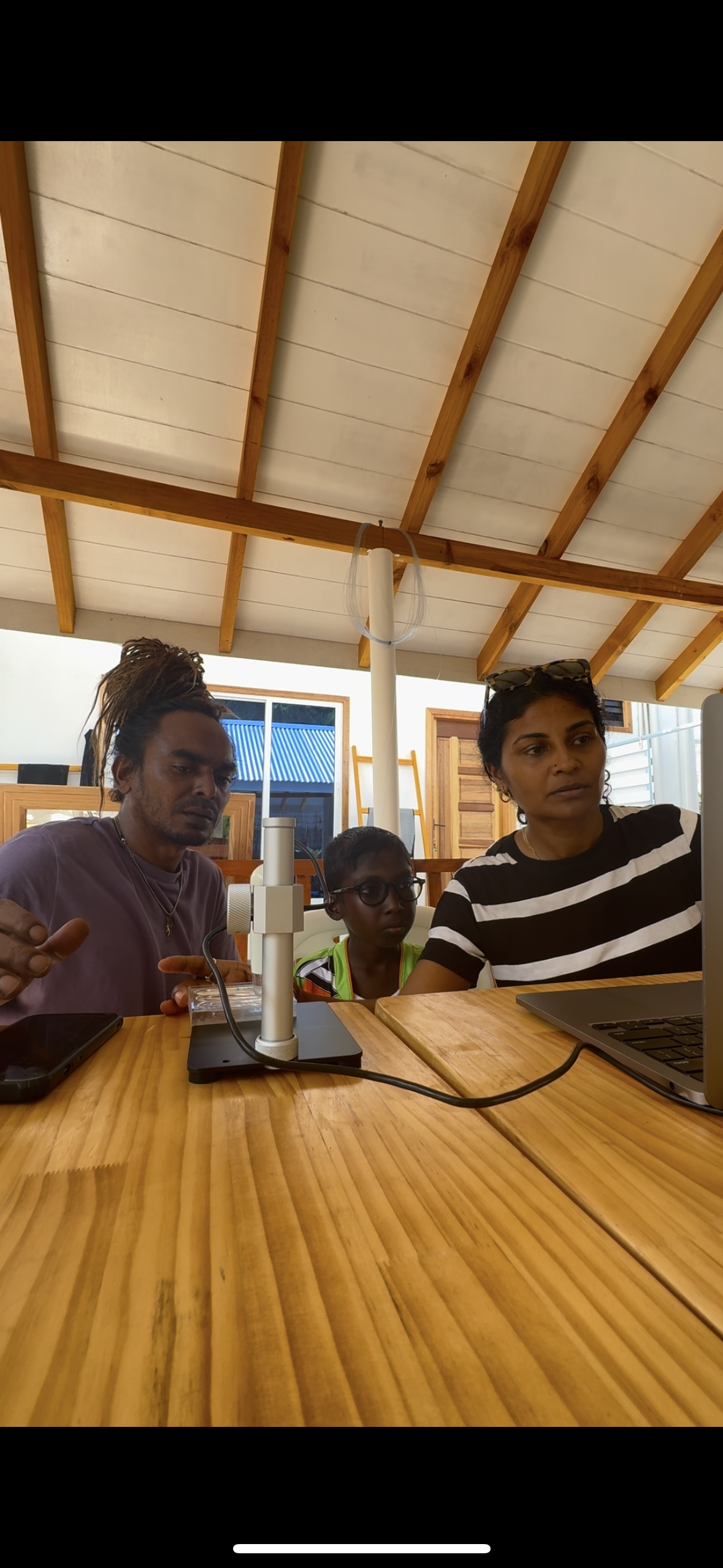A community-based larval coral restoration project that builds on the work of Professor Peter Harrison, who has developed a system which can improve larval production efficiencies by 40%. We are applying this system in 4 Atolls across the Maldives with the ultimate aim of dramatically increasing the scale and speed at which coral reefs can be restored.
Coral eggs and sperm are captured in fine mesh nets, with gametes then strategically crossed to generate hundreds of millions of robust, genetically diverse larvae that can be grown in ocean pontoons and are both released directly onto degraded reef as well as settled onto rubble and natural limestone tiles before being transported to degraded reefs, where they will grow into adult corals.
This CORDAP funded project is carried out with multiple partners including Professor Peter Harrison (project leader) of Southern Cross University; Maldives Coral Institute (local leading partner); Commonwealth Scientific and Industrial Research Organisation (CSIRO); University of Queensland; Australian Institute of Marine Science (AIMS); Queensland University of Technology, Maldives Marine Research Institute; Rathafandhoo Council, South Huvadhu atoll.
Year 1
Project activities commenced in 2024, where stakeholder training and capacity building activities were carried out in April at the MMRI Maniyafushi laboratory. Workshops and reef-based coral spawning, larval culture and knowledge transfer activities were very successful and were attended by 27 representatives from 16 organisations including 21 stakeholders from five Maldives regions in four Atolls and representatives from many partner organisations.
Stakeholders attending the training included representatives from the Maldives Underwater Initiative (MUI), Reefscapers/Marine Savers Maldives, Save The Beach Maldives, Nekton Stakeholder, The Raffles Huvadhu, Kuramathi Eco Centre, Pullman Maldives Maamutaa and Mercure Maldives Kooddoo, Banyan Tree Resort, together with key staff from Maldives project partners from MMRI, MCI and Turquoise Lab. In addition, stakeholders networks include secretariats from local councils: Villingili Island Council, Fulhadhoo Island Council, Baa Atoll Council, Laamu Atoll Council, Rathafandhoo Island Council, and South Huvadhoo Atoll Council.
Training activities led by P. Harrison and supported by SCU project staff J. Moynihan and L. Hasson included detailed presentations on: the rationale and plans for the three year CORDAP project, global coral restoration methods, the five phases of larval restoration and detailed methods, examples of successful larval restoration outcomes in the Philippines and GBR, global patterns of reef coral reproduction, Maldives coral spawning research presented by Maldives Reefscapers staff, mass larval culture and settlement including set up and use of the floating larval pools, coral biology and ecology, and coral stress including coral bleaching responses and mass bleaching and global climate change impacts. The capacity building workshops also included training with the new thermal stress mapping tool developed by CSIRO for this project for coral bleaching and satellite metrics app using degree heating weeks data and training with QUT ASV operations for reef mapping and monitoring.
These activities resulted in the development of strong partnerships and collaborations among the project team and Maldives stakeholders, successful coral spawning, larval culture and settlement research and stakeholder training in April and May, and the development of new networks within the Maldives. These stakeholders are based across the 4 atolls this project spans, allowing a concerted effort at multiple locations during each spawning period over the projects’ lifespan. We collected more than 6 million eggs during multiple spawning nights, and reared and released more than 200,000 competent larvae onto degraded reef plots. More than 3,000 larvae were settled onto reef rubble, and ongoing monitoring is tracking post-settlement survival and growth of coral recruits and juveniles. These outcomes enabled further expansion of the project and training with the stakeholder networks during 2024 and early 2025.
Year 2
Project work for 2025 commenced in January, where after a scoping trip, we decided to focus MCI’s activities for the March/April coral spawning period in Fulhadhoo Island. Gravid coral checks were done in March, and we carried out the spawn capture, larval rearing and settling, larval release, and associated activities in April. Multiple species of spawning corals were observed over 4 nights, representing at least 6 species. Mass spawning was observed on 15th of April, where at least 4 species of massive corals spawned near the existing Mars/MCI restoration site, and possibly many more. Our partners and stakeholders in other atolls carried out similar checks and also observed spawning corals during this period.
During our activities in Fulhadhoo, we held community meetings, Q&A sessions, conversations with island elders, and educational sessions with members of the community. Project activities were carried out successfully, with at least 4 million gametes collected, from at least 7 species of coral which represent 5 genera. Fertilization rates were higher than the desired minimum rate of 70%, where 76% and 90% fertilization rates were observed from the spawning on the 14th and 15th nights respectively. After some larval settlement on rubble pieces which were attached to the natural and restored reef, an estimated 2.2 million larvae were released onto the natural reef. These will be monitored for growth, survival and density over the coming months and years.
As this is a 3-year project, larval restoration activities will be continued
